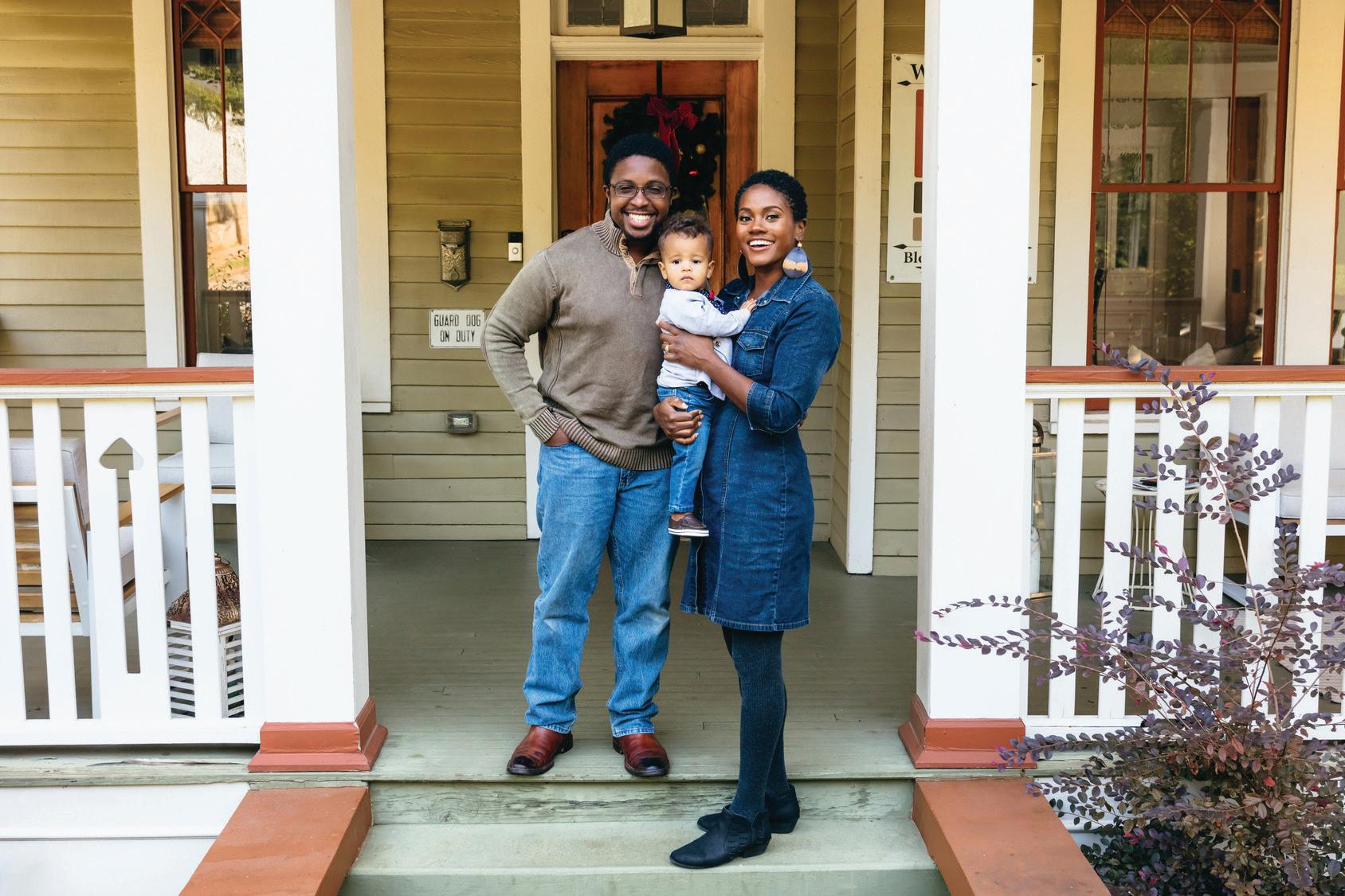




The Afrolatino Festival NYC and Afrolatin@ Project this week present the Liberación Film Festival October 7-11, celebrating narratives and experiences of Afrolatine's from the U.S, Latin America and the Caribbean.
The Festival features more than 20 films presented virtually and in-person, from over nine countries including world premieres, two U.S premieres and a retrospective series, together with director
Q&A's, AfrolatinTalks, industry panels, musical performances and more.
The 2025 Festival, with a focus on Panamá, is presented in collaboration with the Day of Independence Committee of Panamanians in New York, Inc. (DICPNY), producers of the 30th anniversary celebration of the annual Panamanian Parade on Franklin Ave, Brooklyn October 11. It is the largest parade of Panamanians outside of the Republic of Pana-
ma and the Festival will be part of the scheduled pre-Parade activities.
Liberación, Tuesday October 7, features the New York Premiere of "Cirilo: A Legacy Untold" about Cirilo McSween a civil rights warrior who made important contributions to the Panama Canal Treaty negotiations, followed by " Rubén Blades is Not My Name" on legendary Panamanian salsero Rubén Blades. Wednesday October 8, the Festival features
the World Premiere of "Crossing the Darién", a documentary short on the the migratory crisis at the Darién Gap from the perspective of a group of Afrodescendant human rights observers. The day concludes with “Black Rio! Black Power!”, on the Black Arts Movement of 1960's-80's Latin America, specifically in Brazil.
Films are available for virtual viewing on demand.
These include “Los Hijos de la Costa” (Mexico), “Lulami Ni-
They are underwater across the board, and they know it. And that is causing them to double down in public. But it is backfiring.
I think there are two things that are happening at once, and this is something that’s very important for people to understand:
One: there absolutely is an unprecedented abuse of power, destruction of norms, erosion of our government and our democracy in order to prop up an authoritarian style of governance.
That is happening.
However: they are weaker than they look. It is important that we remember that.
Because what they rely on is the impression of power, the perception of inevitability, in us giving up in advance, to say, “Oh, what’s going to happen if I stand up?” Nothing’s gonna happen.
They rely on that perception of inevitability and power so that people comply in advance, acquiesce in advance, and give up in advance. And at the end of the day, Donald Trump is at record levels of unpopularity in his tenure. The Republican House is at record levels of unpopularity.
That is why — whether it’s a shutdown, whether it’s all of this — they want us to blink first. And we have too much to save.
Protecting people is too important a task for us to give up before anything even starts. So they may want to send people in, but these National Guardsmen do not want to be turned against their fellow Americans.
We’re seeing this here in Washington, D.C. It is an insult.
Donald Trump is insulting the service members of this country by putting them on these silly tasks that they themselves do not want to be enforcing.
And so we have to understand that standing up matters, that our voice matters, to not give into the cynicism because that is what they rely on in order to perpetuate this idea that they have total immunity from consequence.
They will experience the consequences of this — but we have to be the consequence.
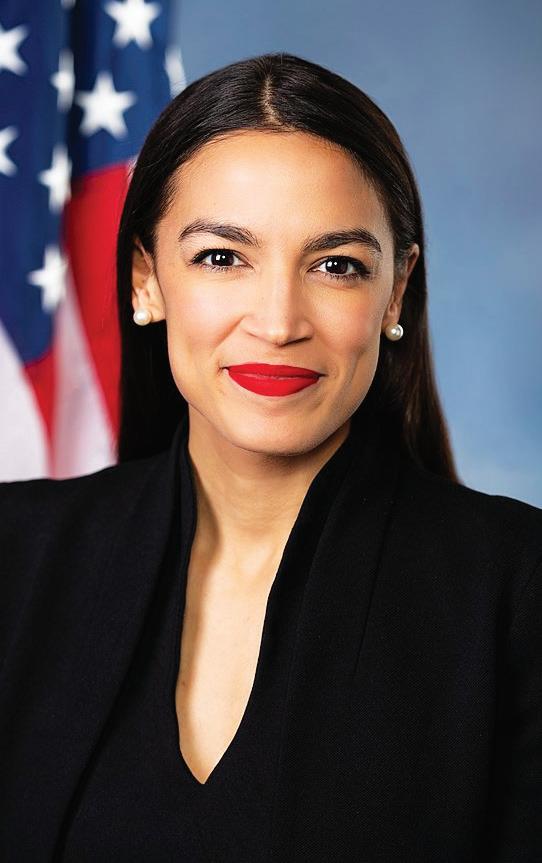
Which is why Congress has to stand tall right now alongside everyday Americans.
wan” (Honduras), “Soul Matters” (Colombia) “Oríkì Oshun” (Puerto Rico) and retrospectives celebrating the 32nd anniversary of the Brooklyn premiere of “Tambo Jazz” by Panamanian director Gerardo Maloney. ” Says Maria Willis, President of DICPNY, "The Day of Independence Committee of Panamanians in New York, Inc. is proud to collaborate with the 2025 Liberación Film Festival as we celebrate the richness of Panamanian culture during our parade festivities.
By Lauren Burke
Publisher Simon & Schuster announced that the campaign memoir of former Vice President Kamala Harris, 107 Days, has sold 350,000 copies in one week. The sales total includes print, ebooks, and audiobooks. The numbers released by the publisher reflect that Harris’ book will be the top political book of 2025. The book goes into the details of Harris’ unexpected 107-day 2024 presidential campaign. The former Vice President became a famous nominee after President Biden dropped out of the race for The White House on July 21, 2024. Biden dropped out after a disastrous debate performance against Donald Trump on June 27, 2024. Biden appeared confused and was slow to answer many questions and many attributed his issues to his age.
Shortly before Biden’s withdrawal there was internal debate on whether there should be a hastily put together Democratic primary. But with only a short time left in the campaign before Election Day — Vice President Harris became the nominee. But the campaign was only 107 days because of Biden’s late timing in exiting the race. While there has been internal criticism


within the Democratic Party pushing back against what Harris relays in her book, the strong interest and response by the public in the form of strong book sales and packed appearances is evidence of strong public interest.
According to Simon & Schuster, the book has already been ordered for a 5th printing. A 5th printing of “107 Days” will bring the number of hardcover copies in print to 500,000. Harris’ book has a chance to be a historic best seller. Michelle Obama’s memoir “Becoming” is widely considered the most-read political memoir of all time. The 2018 book sold over 8 million copies globally and discussed issues of identity, race, ambition, family, and public service. Virtual screenings will be available online October 7-11


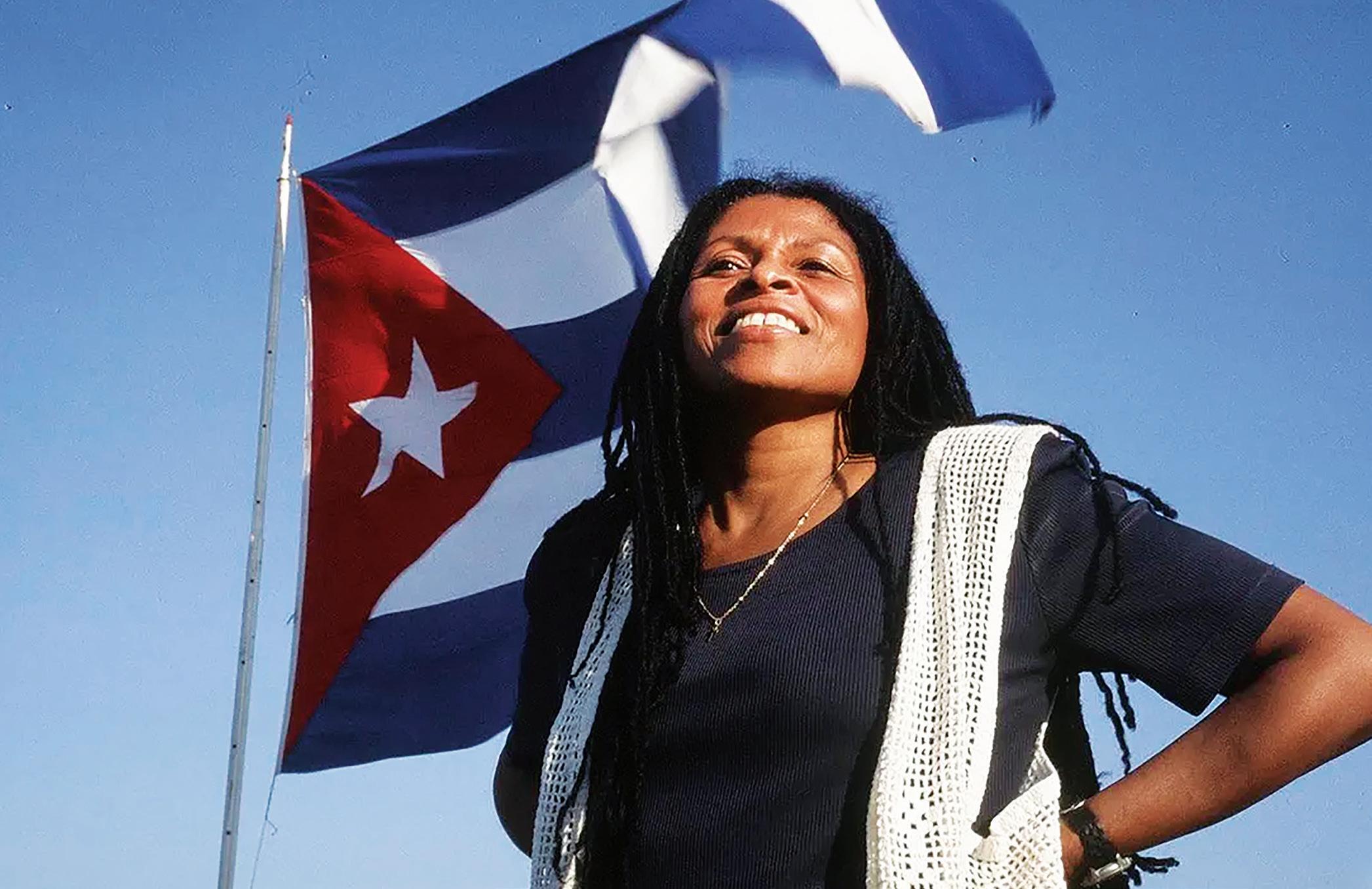
By Stacy M. Brown Black Press USA Senior National Correspondent
The passing of Assata Shakur has left a deep void in those who saw her as more than a revolutionary. She was a mother, poet, and symbol of liberation whose life embodied struggle and sacrifice. On Black Press USA’s Let It Be Known morning news show, journalist and commentator Thandisizwe Chimurenga
spoke about Shakur’s death and her legacy. “My heart literally skipped a beat,” Chimurenga said. “I have known Assata’s daughter and husband for over 30 years. I immediately called to see if it was true. I was so saddened when he said that it was true.”
Born JoAnne Byron and once known as JoAnne Chesimard, Shakur became a leading member of the Black Panther Party and the Black Liberation Army. She was targeted by the FBI’s COINTEL-
PRO program, convicted under disputed circumstances in 1977, and sentenced to life in prison. In 1979, she escaped and was granted asylum in Cuba, where she remained until her death. “I purposefully refrained from going into journalism mode,” Chimurenga said. “The only question I asked was had she been ill. He said, Yes, she had been ill. My heart was broken for them because losing a parent, losing your mother, you are never prepared for that. And I was heartbroken for me, being,
as Assata says, an African woman in America, that she was no longer physically here with us.”
For Chimurenga, Shakur’s exile carried both sorrow and triumph. “I liked knowing that she was physically walking around free in Cuba, away from the clutches of the U.S. government,” Chimurenga said. “I was absolutely saddened that I had never taken myself down to Cuba and tried to find her and interview her
By Lauren Burke, Black Press USA
At the annual Congressional Black Caucus Foundation awards dinner that marks the end of the half-century-old legislative conference commonly known as “CBC Week,” the notable speakers of the evening were blunt in their remarks. Beyond the awards and the sequins and campaign that’s featured at the annual CBC Gala, blunt talk of what is ahead for Blacks in America and the state of democracy was close at hand. Former Vice President Kamala Harris was one of three awardees. “They played the long game working for decades to take over statehouses, gerrymander districts and stack the Supreme Court,” said Vice President Harris, speaking from the large podium to over 2,000 people. She offered advice and surprise at how so many have
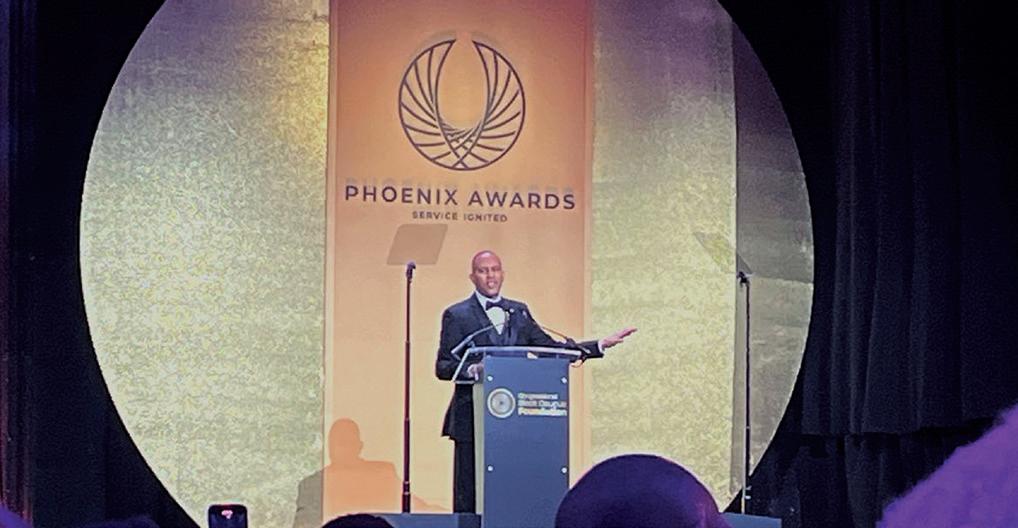
capitulated to the demands of Donald Trump. She also offered remarks on leadership.
“Please let’s get over the savior complex, which suggests only one individual can save us. Come on. As Democrats, we have so many stars and
Nearly 8 in 10 Americans say nation is in political crisis, Quinnipiac poll finds
By Stacy M. Brown Black Press USA Senior National Correspondent
The nation trembles, and the numbers do not lie. A new Quinnipiac University national poll reveals that 79 percent of voters believe the United States is in the grip of a political crisis, a judgment cast in the shadow of conservative activist Charlie Kirk’s assassination. Across partisan lines, the consensus is chilling: 93

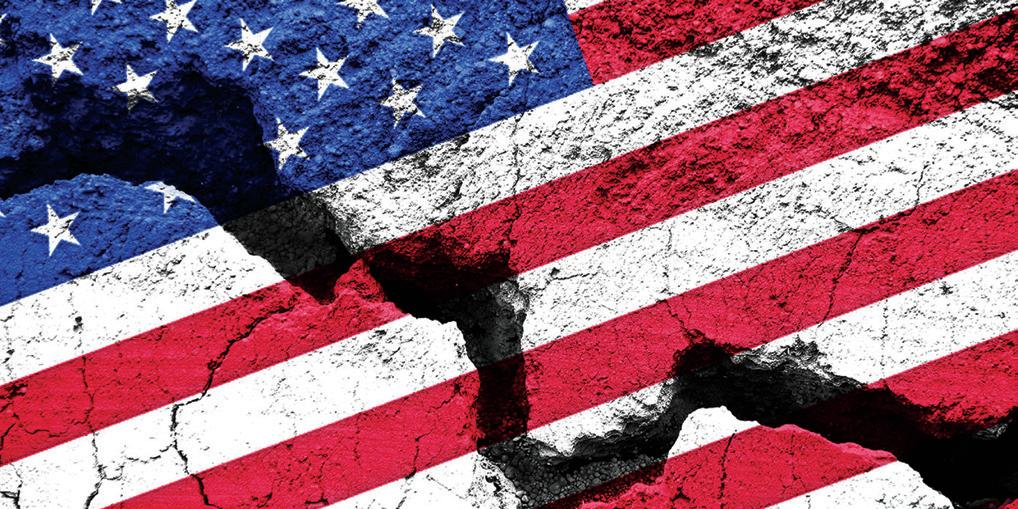
percent of Democrats, 84 percent of independents, and even 60 percent of Republicans agree the country is spiraling. “The Kirk assassination lays bare
raw, bipartisan concerns about where the country is headed,” said Quinnipiac polling analyst Tim Malloy. Seventy-one percent of voters now call political-

many of them are in this room right now. You are the leaders who are up for the fight,” Harris added. The audience cheered loudly for her appearance on stage. The crowd also reacted favorably to Texas U.S. Congresswoman Jasmine Crockett. Both women have been direct and consistent in their criticism of Trump. “At a time such as this, it demands one thing for sure: we must fight fire with fire,” Harris added. It hasn’t been forgotten that, during her 107-day presidential campaign in 2024, Harris accurately predicted the future of America under a second Trump Adminis-
ly motivated violence a “very serious” problem, a sharp rise from just 54 percent in June. The voices of politicians, amplified and sharpened, are seen by 82 percent of respondents as feeding the violence that stalks the streets and corrodes the public square. A majority—58 percent—no longer believe the temperature of political rhetoric can be lowered. Instead, more than half of voters expect political violence to worsen in the coming years. Malloy captured the mood bluntly. “From a perceived assault on freedom of speech to the fragility of the democracy, a shudder of concern
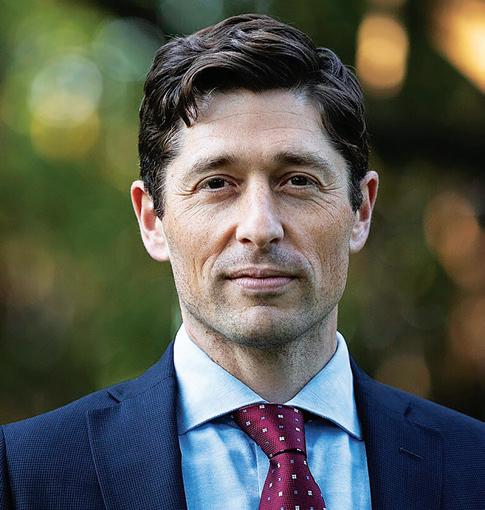
Last night, the Trump administration filed a lawsuit against Minneapolis and other jurisdictions throughout the state. They’re going after us because, in Minneapolis, we stand with our immigrant neighbors. This baseless lawsuit is nothing but political theater designed to intimidate us into submission. But let me make one thing clear: we will fight with all our strength for our immigrant neighbors, and we will not back down. We believe in our separation ordinance, which prohibits all city employees from helping with federal immigration enforcement. Not only are this administration’s immigration policies horrible, but immigration is fundamentally a federal responsibility, not a city one. I want Minneapolis police officers focused on preventing and responding to violent crimes, not immigration enforcement. And as long as I am mayor, that ordinance is never, ever going away. Trump has built his career on attacking immigrants and dividing Americans, and this lawsuit is no exception. But we are ready to fight and to win. We will continue to stand by our immigrant communities, no matter what threats this administration throws at us. In Minneapolis, no matter who you are, who you love, or
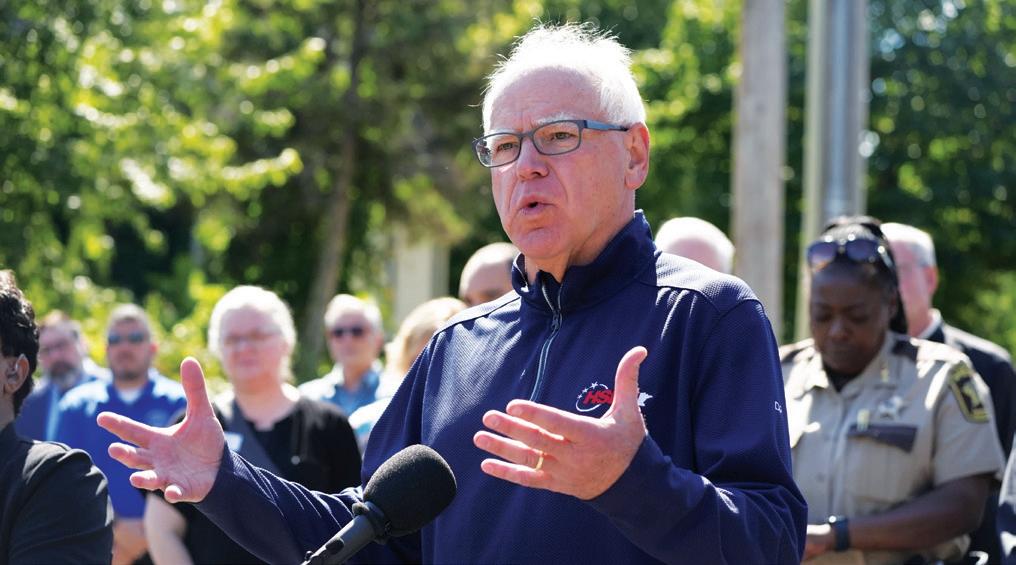
Governor Tim Walz and DFL legislative leaders last week released a detailed proposal for a special session focused on gun violence and school safety. The Governor and DFL leaders proposed specific action on guns as well as bipartisan proposals on school safety, additional mental health resources, and new funding for law enforcement.
“This proposal meets the expectations that Minnesotans have for their elected leaders – that we respond to threats to public safety and take direct action on guns,” said Governor Walz. “We will not let this issue simply go away. Our offer addresses mental health, school safety, support for law enforcement, and most importantly, common sense gun laws.” “In the wake of an unspeakable tragedy, DFL leaders have come to the table with a substantial list of proposals to
By Monique LeNoir, African American Wellness Project

As a Black woman, I felt compelled to write this article after reading the heartbreaking news about Tyra Spaulding, the former Miss Universe Jamaica contestant who died after publicly sharing her struggles with mental health. I also recalled Cheslie Kryst, Miss USA 2019, who died by suicide at only 30. Two young women who seemed happy and accomplished on the outside were, in truth, battling pain within. Their deaths are painful reminders that depression is real and that even those who appear to have everything can be suffering in silence. This year has been heavy for so many of us. Be-
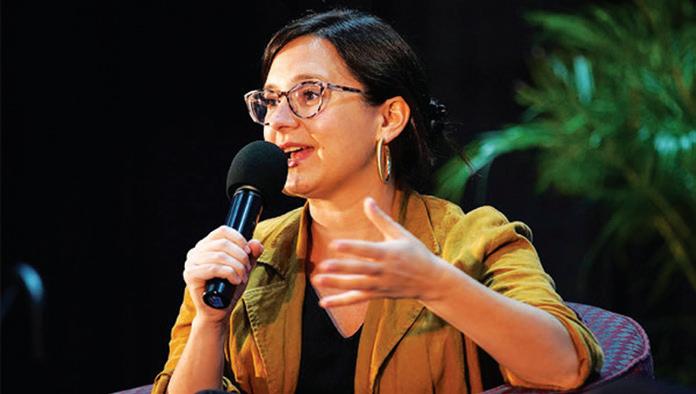
Art & Culture A Bari Weiss-led CBS News would likely look different, but how the public feels about it might not change

Esq.
I keep asking myself what it feels like when your safe space is no longer safe.
For the students at Tennessee State University, that question became painfully real when a group of white men in red MAGA hats walked onto their campus with signs declaring “DEI should be illegal” and “deport all illegals now.” They claimed it was debate, but anyone who has lived with the reality of racism knows it was intrusion. It was disruption by design, a deliberate attempt to provoke and unsettle young Black people in a space that was built to affirm their dignity.
As a Black Gen Z woman, I know what it is to cling to safe spaces. My peers and I grew up with school lockdown drills, with social media that can turn cruel in an instant, with the knowledge that the places meant to nurture us are never guaranteed to protect us. So when outsiders treat an HBCU as a stage for spectacle,
I feel the violation too. These institutions exist because Black students were shut out elsewhere. They are sanctuaries our ancestors carved into the landscape of exclusion. To invade them is not simply rude or disruptive. It is a continuation of a long history in this country where Black sanctuaries have been treated as targets rather than havens.
The Black church has carried that pain for generations. In Birmingham, children were murdered in the pews of 16th Street Baptist Church because white supremacists could not tolerate Black people gathering in peace. In Charleston, the congregation at Mother Emanuel welcomed a stranger into Bible study, only to be massacred in their sanctuary. Black neighborhoods have carried it too. Tulsa’s Greenwood District, once called Black Wall Street, was destroyed in 1921 by white mobs who could not bear to see Black prosperity. Later, highways were built through thriving Black communities under the banner of renewal, fracturing safety and stability once again. Even our schools have been threatened, from bomb scares at HBCUs just a few years ago to the daily underfunding that undermines their promise. The men at TSU may have carried cameras instead of

weapons, but their intent echoed those same violations: to remind us that our safety is never settled, that our belonging is always up for debate.
What has stayed with me most is not only the trespass, but what followed. On TikTok, members of our own community quickly produced videos to chase clout and curry favor with people who wish to do us harm. One that struck me came from Carmen Jaycee, who used her platform to join the red hat chorus of those getting clicks for trashing TSU and all HBCU students. She mocked their emotions, calling them
“low class,” and went so far as to label HBCUs “ghetto black colleges.” She suggested that instead of reacting, the students should have quietly gone back to class, as though silence in the face of harassment were the measure of intelligence. Watching it, I felt something heavier than frustration. I felt the sting of betrayal. Because we know the outsiders will come. History has shown us that white men in hats or uniforms or robes will walk into our sanctuaries to unsettle us. What I am not sure we are prepared for is how often the wound is deepened by those
who share our skin but not our solidarity. There have always been enablers who will justify harm in order to curry favor with those in power. Social media has only amplified their reach. Where earlier generations had the whisper of respectability politics, ours has the livestream, the viral clip, the hunt for views built on tearing down our own. It is one thing to be told by a stranger that your school should not exist. It is another to watch someone from your own community echo that lie for clicks, sneering at the very spaces that were built to affirm us. That is not just an insult. It is an attempt to fracture the sense of sanctuary that an HBCU provides. And for Black Gen Z, who already wonders if there is any place in America where we are fully safe, it confirms the fear that even our sanctuaries can be infiltrated.
Gwendolyn Brooks once wrote that “we are each other’s harvest, we are each other’s business, we are each other’s magnitude and bond.” I hold onto that when I think about TSU and all HBCUs. The students who stood their ground are our magnitude. They deserve protection, not derision. They deserve a community that understands their fear, not one that belittles it.
What happened at
Tennessee State should be a wake-up call. It is not enough to admire the restraint of students who endured this intrusion or to critique the sharpness of their anger. We must ask why they were forced to face it at all. We must recognize that when even HBCUs are treated as battlegrounds, America is failing to honor the sanctuaries Black people have built for ourselves. I write this as part of a generation that has never taken safety for granted. We do not mistake intrusion for dialogue and we do not confuse silence with dignity. What happened at Tennessee State will stay with us, not as a passing story but as a reminder of how fragile safety can be. For Black Gen Z, it deepens the unease we already carry, that even the spaces built for us can be violated and mocked. And we are even more aware that some among us will choose to carry these harmful messages themselves, trading solidarity for clout and refusing to be part of each other’s harvest. We will hold onto that knowledge as we continue to move through a country that is once again embracing hostility toward our existence. Every intrusion, every insult, and every betrayal becomes part of the weight we carry with us into the future.

By Chuck Hobbs
The older I get, the more I realize that my days are numbered and because of thatreality, I find myself occasionally thinking about the topic of eternal salvation that Ifirst learned as a military brat attending Sunday School and church services with myfamily across the United States.
Back then, I thought like a child, and my thoughts were filled with the very liter-
albelief that when Jesus said, “in my Father’s house, there are many mansions,” that aChristians who professed that Christ was the Son of God who died for our sins woube present and praising His name for all eternity!
Well, “saying” and “believing” are not the same… As I’ve grown older and wiser in my secular and spiritual understanding of historicapolitical, and social matters, I am skeptical—and my skepticism leads me to wrylyconclude that just like the old slave codes and Jim Crow laws segregated this nationfrom Colonial times to the late 1960’s, that the so-called “Body of Christ” will likelyseparate in the afterlife as well!

This separation is not one that’s ostensibly by skin color, mind you, but one that stefrom those who have internalized Jesus Christ’s Commandments and Sermon on thMount and strive to follow those dictates as best they can, as opposed to those whohave adopted Jesus Christ as a mascot—no different than the Alabama Crimson TidFlorida Gators, or Penn State Nittany Lions—while twisting Jesus’s words in a way justify all manner of evil that they project against others who don’t look, sound, orbehave as they do, so long as they add “in Jesus’s name” at the end of their divisiverhetoric.
In the 22nd chapter of the Gospel of Matthew, Jesus Christ is quoted as telling adisciple that the greatest commandments are to “Love the Lord your God with all yheart, with all your soul, and with all your mind,” and, to “Love your neighbor asyourself.” These words are plainly written and easy to interpret!
Which leads me to ask how can one claim to love God (or their neighbors) when they
*Show no empathy for their fellow human beings?




*Conclude that Jesus Christ (in human form) was a blonde haired, blue eyed white mwho, in spiritual form via the Holy Spirit, ordains that white Europeans are mentallphysically, and morally superior to all other humans?
*Deign condescend towards Black and Brown people by concluding that they are “bcriminals,” “intellectually inferior,” and living in shit-hole countries?”
*Assume that women and girls are the “weaker sex”
whose primary purpose is to hachildren even if a pregnancy is a result of rape and/or incest; women are to be meekand submissive to their husbands no matter how violent or cruel said husband mighbe; and women/girls are to be seen and seldom heard from, even with-
in their churchunless parroting the views expressed by their fathers, husbands, or male pastors?
*Tout how the United States is a “nation of immigrants” on the one hand, whileworking hard to prevent pathways to legal immigration for


everyone except whitepeople from around the globe, while deporting Brown and Black people, no matterhow hard working or law abiding?
*Support unfettered access to guns, and wars on top of wars to spread white supremaround the globe?
*Support crackdowns on free speech despite knowing that the Gospels show that Jewas sentenced to die by Pilate not for leading a violent insurrection against the Romoccupation of Judea, but because he said that He was the “Son of God,” which wasdeemed “Blasphemy,” a death penalty offense at the time.
As a classically educated history, political science, and legal scholar, and as a BaptizChristian, I know fully well that the U.S. Constitution is not a “Christian” documenno matter how much so-called Evangelicals try to twist, lie, and distort its very plainwords as agreed upon and written by the Framers! Those men who are celebrated eaFourth of July, the George Washington, Thomas Jefferson, and James Madison typeknew in 1787 that their new nation should neither establish a formal state religion, prevent the free exercise of ANY religion to prevent tyrannical oppression! Meaninfrom their perspective, we, the people, are free to be a Jew, Muslim, Hindu, BuddhisSikh, atheist—or any variation of the same—and endowed with the same legal rightas Christians in this country! But again, when my thoughts dwell on things eternal, I cannot help but to rebukethose who believe in the belligerent, gun toting, immigrant despising, Black andBrown people hating, wealth worshipping version of Jesus Christ as pretenders whohave mastered the performative art of declaring aloud in the streets, the pulpit, andsocial media how much they love God one minute, only to act in ways that cut contrto every single red letter word that’s been
By Ray Brescia Associate Dean for Research and Intellectual Life, Albany Law School
Imagine a protest outside the funeral of a popular political leader, with some of the protesters celebrating the death and holding signs that say things like “God Hates the USA/ Thank God for 9/11,” “America is Doomed” and “Don’t Pray for the USA.”
No matter the political leanings of that leader, most Americans would probably abhor such a protest and those signs.
What would tolerate such activities, no matter how distasteful? The First Amendment.
The situation described above is taken from an actual protest, though it did not involve the funeral of a political figure. Instead, members of the Westboro Baptist Church protested outside the funeral of Marine Lance Cpl. Matthew Snyder, a U.S. service member killed in Iraq.
Through demonstrations like this, members of this group were conveying their belief that the U.S. is overly tolerant of those they perceive as sinners, especially people from the LGBTQ community, and that the death of U.S. soldiers should be recognized as divine retribution for such sinfulness.
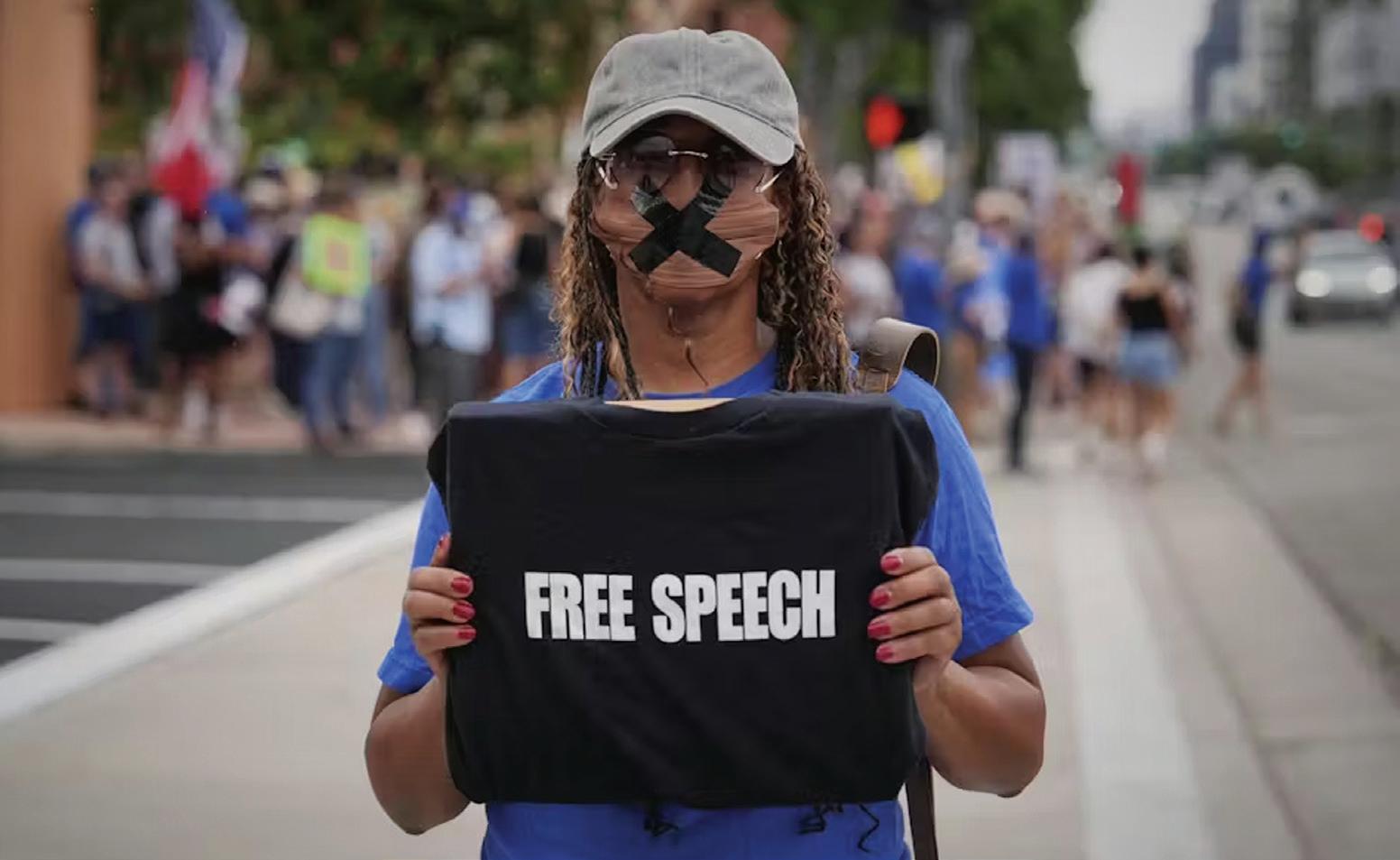
Snyder’s family sued for intentional infliction of emotional distress, among other claims. A jury issued a US$5 million jury award in favor of the family of the deceased service member. But in a nearly unanimous decision issued in 2011, the U.S. Supreme Court found that the First Amendment insulated the protesters from such a judgment.
This holding is particularly instructive today.
The Trump administration has vowed to crack down on what it calls hate speech. It has labeled antifa, a loosely organized anti-fascist group, a terrorist organization. And it has sought to punish figures such as TV host Jimmy Kimmel for statements perceived critical of conservative activists.
What the First Amendment makes clear is that it does not just protect the rights of speakers who say things with which Americans agree. Or, as the Supreme Court said in a separate decision it issued one year after the case involving the funeral protesters: “The Nation well knows that one of the costs of the First Amendment is that it protects the speech we detest as well as the speech we embrace.”
But free speech is not absolute. As a legal scholar who has studied political movements, free speech and privacy, I realize the government can regulate speech through what
are known as “reasonable time, place, and manner” restrictions. These limits cannot depend upon the content of the speech or expressive conduct in which a speaker is engaged, however.
For example, the government can ban campfires in an area prone to wildfires. But if it banned the burning of the U.S. flag only as a form of political protest, that would be an unconstitutional restriction on speech.
Protected and unprotected speech
There are certain categories of speech that are not entitled to First Amendment protection. They include incitement to violence, obscenity, defamation and what are considered “true threats.”
When, for example, someone posts threats on social media with reckless disregard for whether they will instill legitimate fear in their target, such posts are not a protected form of speech. Similarly, burning a cross on someone’s property as a means of striking terror in them such that they fear bodily
harm also represents this kind of true threat.
There are also violations of the law that are sometimes prosecuted as “hate crimes,” criminal acts driven by some discriminatory motive. In these cases, it’s generally not the perpetrator’s beliefs that are punished but the fact that they act on them and engage in some other form of criminal conduct, as when someone physically assaults their victim based on that victim’s race or religion. Such motives can increase the punishment people receive for the underlying criminal conduct.
Speech that enjoys the strongest free-speech protections is that which is critical of government policies and leaders. As the Supreme Court said in 1966, “There is practically universal agreement that a major purpose of (the First) Amendment was to protect the free discussion of governmental affairs.”
As the late Justice Antonin Scalia would explain in 2003, “The right to criticize
the government” is at “the heart of what the First Amendment is meant to protect.”
Restrictions on government action The First Amendment prevents the government from taking direct action to curtail speech by, for example, trying to prevent the publication of material critical of it. Americans witnessed this in the Pentagon Papers case, where the Supreme Court ruled that the government could not prevent newspapers from publishing a leaked – and politically damaging – study on U.S. military involvement in Vietnam.
But it also applies when the government acts in indirect ways, such as threatening to investigate a media company or cutting funding for a university based on politically disfavored action or inaction.
In 2024 the Supreme Court ruled unanimously that the state of New York’s efforts to punish companies that did business with the National Rifle Association because of the organization’s political positions violated the group’s First Amendment rights.
Similarly, in recent months, courts have ruled on First Amendment grounds against Trump administration efforts to punish law firms or to withhold funds from Harvard University.
And just last week, a federal court in Florida threw out a lawsuit filed by President Trump against The New York Times seeking $15 billion for alleged harm to the president’s investments and reputation.
Nevertheless, some people fear government retribution for criticizing the administration. And some, like the TV network ABC, have engaged in speech-restricting action on their own, such as taking Kim-
mel temporarily off the air for his comments critical of conservative activists in the wake of Charlie Kirk’s killing. Before Kimmel’s suspension, Federal Communications Commission Chairman Brendan Carr described his negotiations with ABC’s parent company, Disney, to take action against him. “We could do this the easy way or the hard way,” Carr said. And Trump said that some media companies might “lose their license” for criticizing the president. It is encouraging that, in the face of these threats, ABC has reversed course and agreed to put Kimmel back on the air.
The First Amendment protects speech across the political spectrum, even speech Americans do not like. Both liberal comedian Jon Stewart and conservative commentator Tucker Carlson have recently agreed on this. As Carlson said recently, “If they can tell you what to say, they’re telling you what to think. … There is nothing they can’t do to you because they don’t consider you human.”
Just last year in the NRA case referenced above, the Supreme Court clearly stated that even indirect government efforts to curtail protected speech are indeed unconstitutional. In light of that ruling, efforts to limit criticism of the administration, any administration, should give all Americans, regardless of their political views, great pause.
Disclosure statement
Ray Brescia does not work for, consult, own shares in or receive funding from any company or organisation that would benefit from this article, and has disclosed no relevant affiliations beyond their academic appointment.
Trump turns the military inward, and America confronts its oldest fear
By Stacy M. Brown Black Press USA Senior National Correspondent
The Posse Comitatus Act was born in 1878. It was short, a single sentence, but it carried a promise: soldiers would not patrol American streets. Its origin was poisoned by the retreat from Reconstruction and the rise of Jim Crow, but its meaning grew larger. It became a vow that liberty cannot live where rifles enforce the law of civilians.
Donald Trump has ripped that vow. He sent California National Guard troops into Los Angeles, not with the governor’s consent but against it. He leaned on a statute written for rebellion when no rebellion existed. He placed armed men in neighborhoods where citizens protested his policies, and in doing so, he showed his intent: not to protect the people but to remind them of his power.
Gov. Gavin Newsom answered directly. “We didn’t have a problem until Trump got involved. This is a serious breach of state sovereignty, inflaming tensions while pulling resources from where they’re actually needed,” Newsom wrote to Defense Secretary Pete Hegseth. “Rescind the order. Return control to California.” California Attorney General
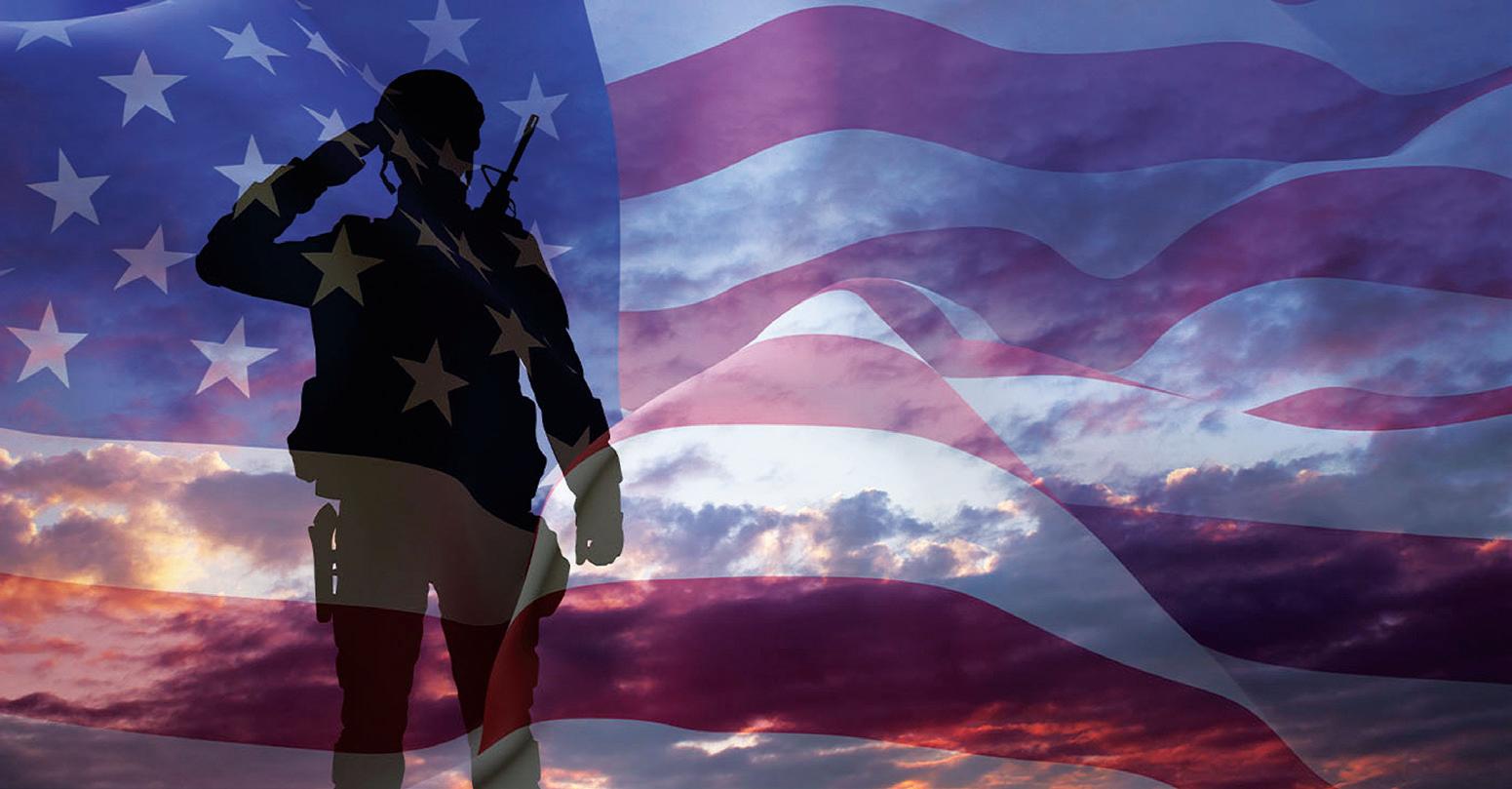
Rob Bonta brought the charge into focus. “There is no rebellion,” Bonta stated. “The President is trying to manufacture chaos and crisis on the ground for his own political ends.” Los Angeles Mayor Karen Bass, too, rejected the claim of disorder. “This is not citywide civil unrest taking place in Los Angeles. A few streets downtown, it looks horrible,” Bass said. “Those found committing acts of vandalism will be arrested and prosecuted.” History knows the moments when presidents sent troops to face citizens. Eisenhower sent them to Little Rock. Kennedy sent them to Mississippi and Alabama. Johnson sent them to Selma. Each time, the aim was to break segregation and open the door to justice. Trump’s act
is not of that kind. He brings the military not to defend freedom, but to frighten those who demand it.
At Marine Corps Base Quantico, he assembled more than 800 generals and admirals. They flew in from across the world, ordered to sit and listen. “I’m thrilled to be here this morning to address the senior leadership of what is once again known around the world as the Department of War,” Trump told them. He mocked former President Joseph R. Biden Jr., praised tariffs and border walls, and declared, “We should use some of these dangerous cities as training grounds for our military.” Hegseth followed him, railing against what he called “woke garbage” in the armed forces and boasting of the of-
Lt. Col. George Hardy, Tuskegee Airman and patriot, dies at 100

ficers he had already removed. “We’ve already done a lot in this area, but more changes are coming soon,” he said. The gathering raised alarms. Lawmakers questioned its cost and its danger, packing the country’s senior military officers into one room. Critics saw a stage, not a strategy. Yet the silence of the commanders gave Trump what he wanted: the image of a military bent beneath his vision. The Posse Comitatus Act has loopholes. Congress cut them, presidents stretched them, courts blurred them. But the spirit of the law remains clear: a democracy collapses when its soldiers police its streets. Bonta named what is at stake. “The President is trying to manufacture chaos,” he said. “This is not about keeping the peace. This is
Why Argentina is looking to the Trump administration for a bailout − and what the US Treasury can do to help
By Arturo Porzecanski Research Fellow, Center for Latin American & Latino Studies, American University
meeting on the sidelines of the United Nations General Assembly in New York, U.S. Treasury Secretary Scott Bessent said he was prepared to lend Argentina up to US$20 billion via currency swaps and bond purchases. But what caused Mil-
ei to go hat in hand to the U.S. in the first place? And what would a U.S. bailout of Argentina look like? For answers, The Conversation turned to Arturo Porzecanski, an expert on Latin American economies at American University. Why is the Argentine government seeking a bailout?
The event that sparked discussion of U.S. intervention was a sharp sell-off of the Argentine
currency, the peso, as well as the country’s stocks and bonds. Over the course of three days ending on Sept. 19, the country’s central bank spent over $1 billion of its hard-currency reserves defending the Argentine peso from further depreciation. To be sure, instead of dialing up his contacts in the
Lieutenant Colonel George E. Hardy, one of the last surviving Tuskegee Airmen to fly combat missions during World War II, has died in Sarasota, Florida. He was 100 years old. Hardy was born in Philadelphia on June 8, 1925. He entered the U.S. Army Air Corps at 18 and graduated as a pilot at 19, becoming the youngest Red Tail fighter pilot of the 332nd Fighter Group. Stationed at Ramitelli Air Base in Italy, he flew 21 missions across Europe. “We had our own club in Naples…so you didn’t go to the White club. That’s…the way life was,” Hardy said in an interview with the Veterans History Project. When the war in Europe ended in 1945, Hardy returned to the Tuskegee Army Airfield as a supervising pilot until it closed in 1946. His career continued across two more conflicts. He flew 45 combat missions in the Korean War and 70 more in the Vietnam War. His decorations included the Distinguished Flying Cross with Valor, a Commendation Medal with one Oak Leaf Cluster, and an Air Medal with 11 Oak Leaf Clusters.
Education remained central to his life. He earned a
bachelor’s degree in electrical engineering and a master’s degree in systems engineering reliability from the U.S. Air Force Institute of Technology. He also received an honorary Doctor of Public Service from Tuskegee University. “We went into the Air Force with racial segregation. When we came out, we changed…When I look back on my service, I’m so proud of the Air Force. And I just think I was able to participate in that and survive that,” Hardy said. The Tuskegee Airmen, Inc. called Hardy’s legacy one of “courage, resilience, tremendous skill and dogged perseverance against racism, prejudice and other evils.”
“Colonel Hardy was an amazing man. He was a patriot. He loved his family. He loved his community. He loved our organization,” Leon Butler Jr., national president of Tuskegee Airmen, Inc., said. “He worked very hard. He worked tirelessly to preserve the legacy, not for himself, but for those that he served with, and he cared about the families of other original Tuskegee Airmen.” The National WWII Museum honored him as a “true American hero,” while the Tuskegee Airmen National Organization honored him by noting that, “His legacy of courage and dedication will never be forgotten.”
From 3
as a journalist. But at the same time, I was rejoicing in the fact that for close to 50 years, she remained free of the United States
3
tration. Her book, entitled “107
From 3
criminal injustice system.” Her words shaped generations of activists. “It is our duty to fight for our freedom,” Shakur famously stated. “We must love each other and support each other. We have nothing to lose but our chains.” That declaration became a chant during protests in
Days,” was recently released. “I’m not interested in talking about how powerful the President is or how powerful the President thinks he is. I’m interested in talking about how powerful we are,” said Mary-
and pessimism rattles a broad swath of the electorate,” he insisted. Freedom of speech, once assumed inviolable, now carries the weight of doubt. Fifty-three percent of voters said they are pessimistic about its protection in America. Just six months ago, the numbers were reversed. The very machinery of democracy is also under suspicion. Fifty-three percent of voters say the system is not working. Democrats and independents share that belief by strong margins, while Republicans—mirroring their president’s claims—remain largely
Walz From 3
make Minnesota a safer place,”
said Senate DFL Leader Erin Murphy. “I’m disappointed Re-
Women From 3
tween the nonstop political news cycle, the pressures of returning to office life, persistent racial injustice, and the violence and division that weigh on our communities, the stress feels unrelenting for Black women, who so often hold families, careers, and communities together; that stress compounds in ways that can be overwhelming. But too often, we don’t stop. We ignore the signs. We push through exhaustion. We tell ourselves it’s just stress, that we don’t have time to deal with it, or that talking about it would make us look weak. We keep going, caring for others, excelling at work, holding it all together, while quietly breaking down inside.
The statistics make
publicans refuse to address the issue of gun violence in any real way. Minnesotans want a comprehensive approach, which should include funding for school safety and mental health access, as well as taking action to limit the easy access to weap-
clear just how urgent this issue is:
More than 7 million Black and African American individuals in the U.S. live with a diagnosable mental health condition such as depression, anxiety, bipolar disorder, or schizophrenia.
Black women are more likely than other women to report symptoms of depression, but are less likely to receive treatment.
In a national survey, nearly half of Black women who rated their mental or physical health as “fair” or “poor” reported experiencing at least one negative consequence from bias in a medical encounter. Only 4% of psychologists in the U.S. are Black, limiting access to culturally competent providers.
Among adolescents, Black girls are nearly twice as likely as their male peers to at-
Ferguson and in the Black Lives Matter movement.
“She was our warrior queen mother, our sister comrade, our mama,” Chimurenga said. “She fought for us. She sacrificed for us. And her autobiography, infused with poetry, showed us the beauty of a wom-
land Gov. Wes Moore. There were many questions and much discussion during CBC Week about “what the strategy is” against Trump’s attacks on democracy moving forward. “The CBC was built in moments like
convinced it functions. President Donald Trump’s approval rating stands at 38 percent, with 54 percent disapproving. Disapproval is strong on nearly every front—foreign policy, the economy, immigration, and gun violence. Meanwhile, Robert F. Kennedy Jr., the Secretary of Health and Human Services, fares little better: 54 percent of voters disapprove of his perfor-
ons of war on our streets. We are ready to make significant progress, but cannot do that without Republicans showing courage on this issue. Parents from Annunciation, other schools, and Minnesotans around the state are demanding that we do some-
tempt suicide.
These are not just numbers—they are us, our sisters, daughters, mothers, and friends. They remind us that strength and success do not shield us from struggle.
So, what can Black women do if they are struggling?
Start with self-awareness. Pay attention to changes in your appetite, energy, or mood. Exhaustion and persistent sadness are warning signs. Talk about it. Share how you’re feeling with someone you trust—a friend, a family member, a pastor, or a counselor. Speaking the words out loud is a powerful first step. Seek professional support. Therapy and counseling can help, especially with providers who understand cultural context. If affordability is an issue, look for community health centers, nonprofits, or on-
Trump isn’t cutting Pell Grants, after all − but other changes could complicate financial aid for some students
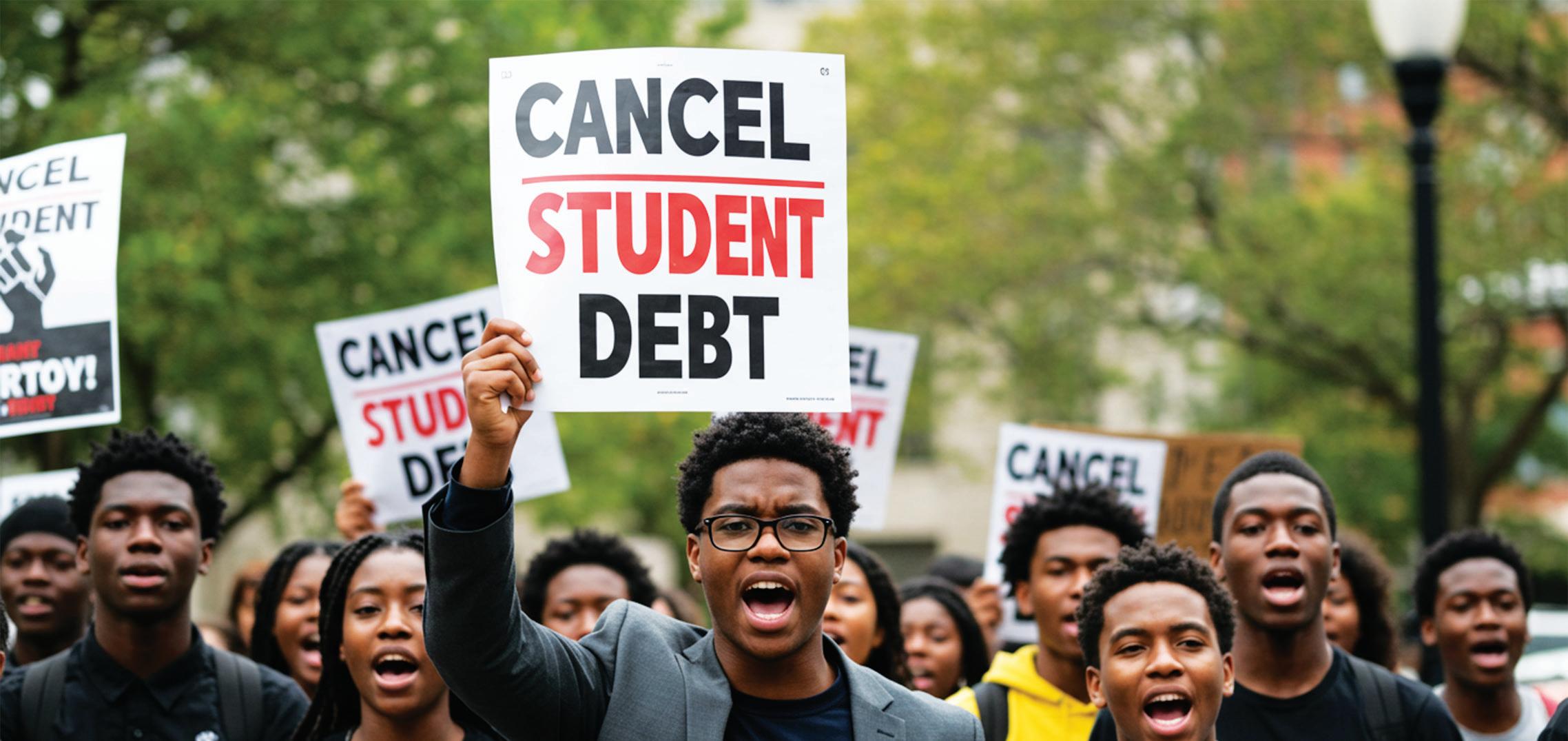
By Jennifer L. Steele Professor of Education, American University
As an education researcher who has studied the economic returns of higher education, I know that college degrees remain cost-effective investments for most students.
But college tuition has risen at roughly twice the rate of inflation during the past two decades, and federal student debt climbed 500% to US$1.6 trillion during that same period.
The Biden administration sought to address this problem with plans that accelerated student loan forgiveness for lower-income borrowers with small balances, allowing debt cancellation after 10 years of repayment, instead of 20 or 25.
However, the courts blocked those efforts, and the Trump administration has taken a sharply different approach.
Guided by evidence that higher borrowing limits contribute to tuition increases, the tax breaks and spending
cuts bill that President Donald Trump signed into law in July 2025 brings changes to the federal financial aid system that prospective higher education students should understand.
The Pell Grant – a need-based higher education grant from the U.S. Department of Education that, unlike a loan, does not need to be repaid – lies at the heart of the federal financial aid system.
While the Trump administration is slightly expanding people’s eligibility for Pell Grants, the new policies also aim to reduce the national student loan spiral by reducing limits on how much some students can borrow for their educations.
Rising college costs and government involvement
The average annual cost of tuition, fees, room and board for a student at a four-year college in the U.S. in the 202223 school year was $30,884, according to the latest available Department of Education data.
But the cost of tuition alone varies dramatically between in-state rates for public colleges, which receive state funding, and private nonprofit
an the state called a terrorist. She was a beautiful soul who often said we must be weapons of mass construction, creating more beauty in the world because the people running it are destroying it.” Reactions to her passing showed the divide in the nation. “America is a white
this,” Gov. Moore added. “If you ever want to learn anything about anybody, watch them when it was hard. Watch them when it was tough. Watch them when it wasn’t simple. Watch them when there are no easy de-
mance, and nearly six in ten say they have little or no confidence in the medical information he provides. The crisis extends beyond politics. Asked about the economy, 53 percent of voters pointed to the price of food and consumer goods as their greatest worry, while another 28 percent named housing costs. And when it comes to the fate of those convicted of murder,
thing, and so far only one side is listening to them.”
“House DFLers are committed to meaningful action on gun violence, including getting weapons of war off our streets. We have made a goodfaith offer to the Republicans
line services with sliding-scale options.
Build supportive routines. Regular exercise, journaling, prayer, meditation, and prioritizing rest can all help support mental health.
At the African American Wellness Project (AAWP), we know that breaking this silence is critical. Founded for us and by us, AAWP was created to close the gap in health disparities and provide trusted knowledge, tools, and resources so
supremacist nation,” Chimurenga said. “It was not founded for us. We were brought here to enrich other people. If we did not believe it before, everything Trump is doing right now is in perfect lockstep with white supremacist principles. And that is how he was able to be reelected
cisions left,” Gov. Moore went on. House Democratic Leader Hakeem Jeffries also spoke as the government stands on the brink of a shutdown and more mass firings of federal employees. The evening featured
twice.” Chimurenga said Shakur’s memory will always remain tied to her devotion to her people. “Love. Love of Black people. Sacrifice, commitment, and beauty,” she remarked. “That is who she was.”
colleges, which do not.
While the average annual tuition was $9,750 per year for in-state students at public four-year colleges in 2022-23, it reached $38,421 at private nonprofit colleges, even if a student lived at home and did not pay for room and board.
These prices are roughly two to 200 times those of 42 other countries across six continents that have high-quality education data – not including seven countries, including Sweden and Saudi Arabia, that essentially have free tuition.
While many countries around the world subsidize tuition directly, the U.S. government focuses assistance toward individual students based on their financial need.
It does this through a combination of federal grants, loans and subsidies for campus jobs, all administered by the Department of Education. In 2019-20, about 40% of the nation’s 17 million undergraduates received federal grants – mostly Pell Grants, according to the latest federal
55 percent favor life in prison without parole over the death penalty. Gun violence, foreign conflicts, and the direction of democracy itself weigh heavily. Eighty-three percent of voters believe political leaders are more interested in blaming others than finding solutions. The Quinnipiac poll surveyed 1,276 registered voters nationwide from September 18–21, with a margin of error of plus or minus 3.3 percentage points. “Nearly 80 percent of registered voters feel they are witnessing a political crisis, seven in ten say political violence is a very serious problem, and a majority say this discord won’t go away anytime soon,” Malloy noted.
that includes their policy priorities in an attempt to reach a bipartisan agreement, but the question remains: will they join us in this effort?” said Representative Zack Stephenson. “Minnesotans deserve to be safe from gun violence. They are demand-
our community can take charge of its health. Our Mental Health Resource Hub connects people with information, checklists, and organizations designed to meet our unique needs.
As AAWP founder Dr. Michael LeNoir has said:
ing action, and they deserve to know where Republicans stand on addressing gun violence. We shouldn’t have to endure more mass shootings, more violence, and more grief. Now is the time for common-sense action to keep our communities safe.”
“Depression is not a weakness. It is an illness that requires care, just like diabetes, stroke, or cancer. We must remove the stigma and shed light that getting help is not giving up, it’s fighting back.” And if you or someone you know is in immediate crisis, call or text 988 to reach the Suicide & Crisis Lifeline, available 24 hours a day, or dial 911 in life-threatening emergencies. Black women, we do not have to carry everything alone. You are allowed to rest. You are allowed to feel. You are allowed to not be “strong” all the time. Depression is real, but so is recovery. And let’s be clear: our healing is not optional, it’s essential.
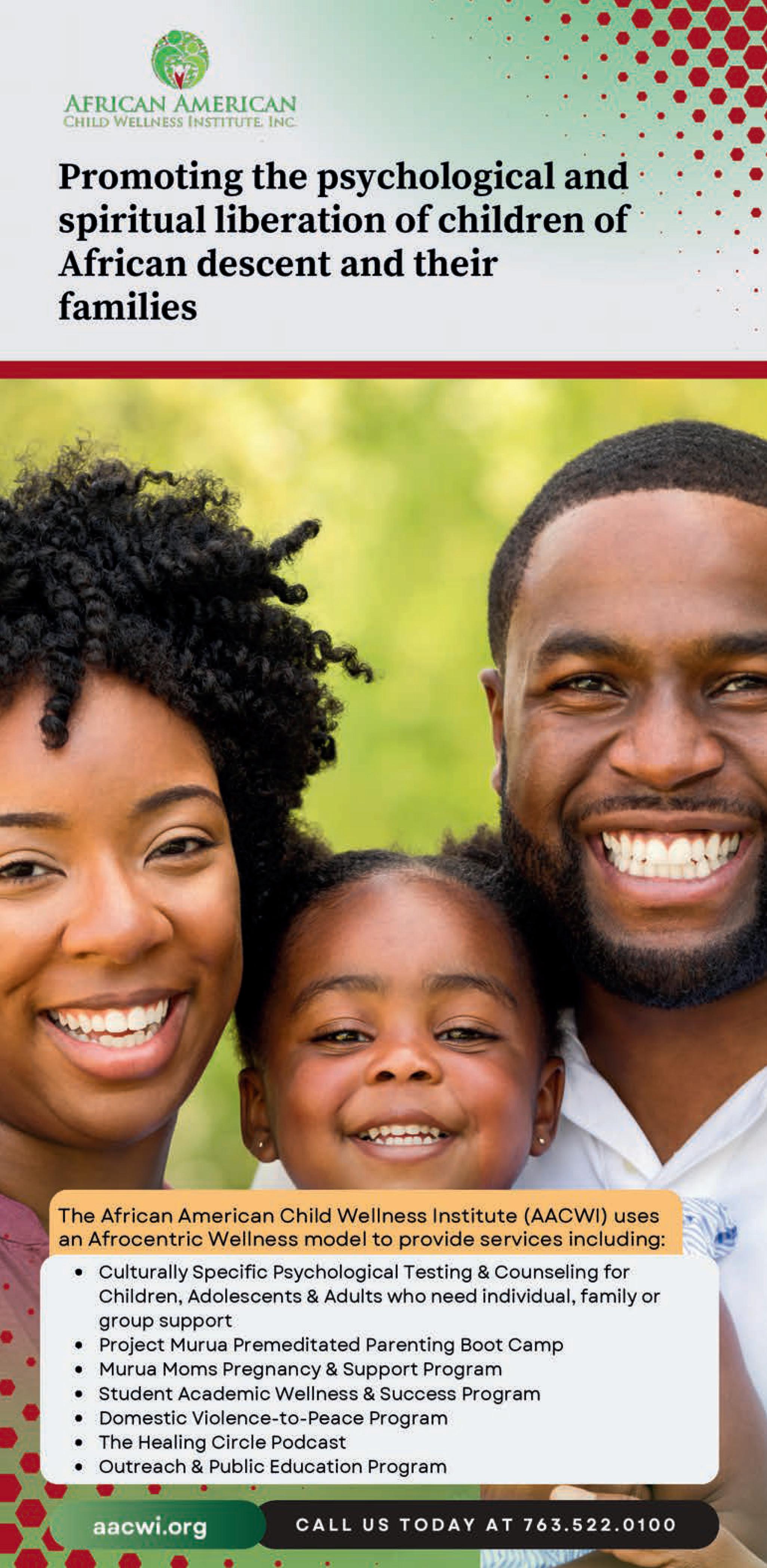
Trump administration, Milei could have allowed the currency to find its market-clearing value – that is, the price at which supply and demand match.
Alternatively, he could have kept up the effort to stabilize the peso by spending still more billions of dollars previously borrowed from the International Monetary Fund. However, he decided to call Washington and ask for financial support, hoping that the friendship with Trump he has been cultivating from even before Milei was elected would finally pay off.
The Argentine authorities fear that a sharper depreciation will reignite expectations of high inflation, and they also wish to conserve those IMF funds to help cover nearly $20 billion in interest and principal payments on dollar debts coming due in the next 15 months.
The Argentine government would also rather not have the central bank raise interest rates by tightening monetary policy still more, nor implement additional cuts in government spending given that the economy is either stagnant or already in a recession.
Argentina’s economy got here because prior to Milei taking office in December 2023, his predecessor applied very loose monetary and fiscal policies – such as keeping interest rates low and spending high to stimulate the economy – as well as business-unfriendly regulations. That rocketed annual inflation into triple digits and led to the crumbling of confidence among domestic and foreign investors, thus complicating the government’s ability to refinance its maturing debt obliga-
Grants
From 6
data. Meanwhile, 34% of undergraduates and 39% of the country’s 3 million graduate students received federal loans during this same time period.
Roughly 5% of undergraduates received subsidized on-campus jobs through federal work study in the 201920 school year.
Changes ahead for Pell Grants
The U.S. government first awarded Pell Grants to students in 1973. They are designed to make college affordable for families, as determined by their income, family size and savings. Historically, Pell Grants have focused just on undergraduates.
In 2022-23, about 75% of Pell funds went to students from families earning less than $40,000 per year.
Still, a family of four earning as much as $92,000 a

tions.
While Milei reversed many of those harmful policies during the course of 2024, notably achieving a balanced government budget and a sharp deceleration of inflation, his popular support and confidence in his ability to manage the country’s remaining challenges have weakened in recent months.
The economy has stalled, with job losses and unemployment rising. Phone recordings suggesting corruption involving the president’s family were released. And Milei’s party did surprisingly poorly in recent elections that took place in the large province of Buenos Aires. With midterm congressional elections scheduled for Oct. 26, Milei badly needs political and financial support from the Trump administration in order to stabilize the local financial markets and project a sense of order.
What options are there for the US to help Argentina?
The U.S. government has already been unusually supportive of Argentina from its
year in 2024 would also qualify for a small Pell Grant in some circumstances.
A version of the Trump administration’s budget proposal for October 2025 through September 2026 called for reducing the maximum federal Pell Grant award to $5,710 a year from $7,395.
This caused some observers to worry that the Trump administration would try to scale back federal Pell Grants, which offer $740 to $7,395 per year to students in the 2025-26 school year.
Instead, the budget bill shores up overall Pell Grant funding and holds grant amounts level with those of previous years. It also creates a new type of Pell Grant to support workers seeking short-term retraining in a particular industry.
The budget bill also introduces another new grant called the Workforce Pell Grant. Starting July 1, 2026, this program will make small Pell Grants available for students pursuing career training programs of eight to 15 weeks toward recognized credentials
dominant positions on the board of directors of the IMF, World Bank and Inter-American Development Bank. Earlier this year, it helped the country to secure from them pledges and disbursements worth tens of billions of dollars in new loans.
What is very new and different now is the prospect of direct lending from the U.S. Treasury to the government of Argentina. As previewed by Treasury Secretary Scott Bessent on Sept. 24, his team is currently in negotiations with their counterparts in Argentina for a $20 billion swap line, which presumably would involve the Treasury’s temporary purchase of Argentine pesos in exchange for the delivery of U.S. dollars. This could possibly be supplemented by the Treasury’s temporary purchase of Argentine government bonds, likely payable in dollars, whether newly issued or already in circulation.
Bessent’s announcement, coming on the heels of Trump’s vow to help out his Argentine counterpart, has prompted local and foreign investors to regain confidence in
in “in-demand industry sectors or occupations,” even if students already have bachelor’s degrees. Controversially, a new House of Representatives appropriations bill proposes to rename the Workforce Pell Grants as “Trump Grants.”
But whether or not Congress approves the renaming, the grants will for the first time make Pell funds available to people who need short-term training to stay current in the labor market.
This is particularly important as long-term unemployment rises among the college-educated, driven by federal layoffs as well as the growth of artificial intelligence.
The role played by federal student loans
Despite some of their advantages, Pell Grants cover only about a quarter of the total cost of college attendance. As a result, 83% of Pell Grant recipients also receive other forms of aid – mostly through federal direct loans, which must be repaid.
The average undergraduate direct loan borrower
Argentina, such that beaten-up stocks and bonds have bounced back and the currency has appreciated.
This immediate and enthusiastic market response, if sustained, means that the Treasury may not have to spend too many billions of U.S. dollars to boost public confidence in Milei and Argentina, at least until the upcoming midterm elections.
Should Milei’s party do well in the late-October contest, enabling it to gain seats in the House and Senate and thus have more political support in the national legislature, a relatively small and temporary investment may yield a worthwhile payoff for the Trump and Milei administrations.
Why is the US keen on helping out?
Normally the U.S. government does not involve itself directly in foreign bailouts unless a country is systemically important – namely, when its troubles affect its neighbors, a number of other countries, or the United States itself.
For example, in the 1990s the U.S. Treasury offered
graduated with about $26,000 in federal debt in 2019-20.
Assuming the 6.08% interest rate on federal loans at that time, it would have cost a graduate $290 a month to repay the loans under the standard 10year payment plan.
Even so, about 10% of student loan borrowers default, meaning they stop paying on their loans entirely.
Loan default rates are higher among students who attended less-selective colleges and those who did not finish their degrees.
Under existing rules that are not changing under the Trump administration, undergraduates will still be able to borrow up to roughly $10,000 per year in federal direct loans, depending on how far along they are in school.
Graduate students, meanwhile, will still be able to borrow up to $20,500 per year.
New limits for parttime and graduate students
One important change following the Trump budget bill’s passage is that the Department of Education will pro-rate, or reduce, Pell Grant limits for
direct support to other countries during crises in Mexico, East Asia and Russia, and in 1995 Argentina was one of the beneficiaries. And in 2008, in the wake of the global financial crisis, the Fed made available dollars in exchange for the currencies of about a dozen foreign countries – currency swaps mainly with European countries but also with Brazil, Canada and Mexico, since the meltdown affected Washington’s North American neighbors and many nations in Europe.
Moreover, in most cases, whatever Treasury or Fed funding is made available is soon repaid by upcoming loans from institutions such as the IMF and the World Bank, or else by major banks or institutional investors. In other words, most U.S. official support has been of the “bridge lending” kind, because the Treasury and the Fed can act within days, whereas other financial actors require weeks or even months to approve and disburse funding.
In the case of Argentina, it is notable that Bessent has stated that Argentina is systemically important, even though its troubles have so far not affected any other country. Left unsaid is how Argentina would repay the U.S. Treasury, because the pipeline of upcoming disbursements from official international organizations is not very large. Therefore, the funds under discussion are not clear bridges to anything. In similar circumstances in the past, the U.S. Treasury has sought payment guarantees from foreign governments. Given the transactional approach favored by Trump, certain conditions may be demanded from Argentina – a country endowed with lithium, rare earths, shale oil and other resources.
What is the US Treasury’s Exchange Stabilization
students enrolled part time.
This means tuition at some higher-priced colleges may become unaffordable for part-time students.
This change will force some students to choose between enrolling part time in a low-tuition program or full time in a higher-tuition program.
The other change to federal borrowing limits pertains to graduate students.
The budget bill lowers the lifetime borrowing limit for graduate study from $138,500 to $100,000.
For students pursuing professional degrees such as law and medicine, the limit rises to $200,000.
But the law does away with a program for graduate students called PLUS Loans that now serves about 11% of graduate students, including about 40% of students seeking professional doctorates.
These changes may make it more expensive for graduate students to receive a degree, which could steer them toward lower-priced programs.
The effect for prospective students
Fund?
The Exchange Stabilization Fund is the Treasury’s crisis-funding vehicle through which the bridging loan to prop up the Argentine currency would be made.
The fund was established in the mid-1930s. It was endowed with the profits that the U.S. Treasury realized when the official price of gold rose from $20.67 to $35 per ounce, increasing the value of U.S. government gold holdings. For several decades through the 1980s, namely before the U.S. currency was allowed to float freely, the fund’s main purpose was to provide the funding for Treasury operations to affect the price of the dollar. A secondary purpose was to provide short-term, government-to-government loans mainly to Latin American countries, yet starting in the mid1990s this became its primary objective.
The last Exchange Stabilization Fund loan was granted to Uruguay in mid2002, in the wake of a major financial crisis in next-door Argentina that had triggered a bank run in Uruguay – and threatened to spread elsewhere around the region. The Treasury sent $1.5 million to Uruguay on a Monday to back at least the government-owned banks, and the funds were returned to Washington that same Friday. The bank run was stopped and thus the loan succeeded magnificently.
Disclosure statement Arturo Porzecanski does not work for, consult, own shares in or receive funding from any company or organisation that would benefit from this article, and has disclosed no relevant affiliations beyond their academic appointment.
As prospective students weigh their options, they should remember that most facets of federal financial aid remain unchanged.
Key changes aim at limiting high debt levels, specifically for part-time and graduate students and those attending high-tuition colleges when lower-priced institutions are readily available.
These changes may reroute some students from private to in-state colleges and from part-time to full-time study. Faced with increased price competition, some colleges may feel pressure to scale back costs through cuts to programs, services and amenities. For prospective students, such moves could reduce colleges’ luxuries but improve their affordability in the long run. Disclosure statement Jennifer L. Steele does not work for, consult, own shares in or receive funding from any company or organisation that would benefit from this article, and has disclosed no relevant affiliations beyond their academic appointment.
By Beverly Moran Associate Dean for Re-
Intellectual
search and
Life, Albany Law
School
Not long after U.S. housing prices reached a record high this summer – the median existing home went for US$435,000 in June – President Donald Trump said that he was considering a plan to make home sales taxfree. Supporters of the idea, introduced by U.S. Rep. Marjorie Taylor Greene as the No Tax on Home Sales Act in July, say it would benefit working families by eliminating all taxes on the sales of family homes. But most Americans who sell their homes already do so tax-free. And the households that would gain most under Trump’s proposals are those with the most valuable real estate.
Most families already sell their homes tax-free Right now, according to the Internal Revenue Code, a single person pays no tax on the first $250,000 in gain from a home sale, while married people can exclude $500,000. All told, about 90% of home sales generate less than $500,000 in gains, so the overwhelming majority of sellers already owe no tax.
The minority who would see new benefits from the proposed tax change are those with more than $500,000 in appreciation – typically owners of high-priced homes in hot real estate markets. Yale’s Budget Lab estimated the average benefit for these tax-free sales was $100,000 per qualifying seller.
Homeownership itself isn’t equally distributed across
As a legal scholar who studies how taxes affect racial and economic inequality, I see this proposal as part of a familiar pattern: measures advertised as relief for ordinary families that mostly benefit the well-off.
the U.S. population. About 44% of Black Americans are homeowners, compared with 74% of white Americans. That racial gap has only widened over the past 10 years. Similarly, single women – particularly but not exclusively women of color –face additional barriers.
A broader trend of upward wealth transference
Though still just a proposal, the tax-free home sales bill is part of a broader set of Republican tax plans that would have regressive effects – that is, where the vast majority of benefits go to high-income people and very few to low-income people – under a pro-worker banner.
Trump floated the taxfree home sales idea less than three weeks after he signed a large package of tax and spending measures in

By Amy Adamczyk Professor of Sociology and Criminal Justice, City University of New York
Many factors can shape how someone views abortion –gender, age and education, to name a few. Around the world, however, religious belief is the most powerful predictor that someone will disapprove, as I document in my 2025 book, “Fetal Positions.” Faith traditions’ teachings about abortion vary – and there is diversity of opinions within faiths, too. On average, though, people who say that religion is important in their lives are far more likely to think abortion is morally wrong.
But here’s the paradox: There’s a difference between abstract views and personal decisions. On average, strong religious beliefs and involvement in a religious community do not make an American woman less likely to terminate her first pregnancy, so long as she conceives without a potential marriage partner.
The picture becomes even more complex when we consider not just how religious someone is but which tradition they belong to. Young American women in conservative Protestant churches are about half as likely to say they have aborted a premarital pregnancy than Catholics and mainline Protestants, regardless of how devout they are, according to my co-authored research. Other work has found similar differences among Christian groups. There were too few respondents from other religions to fully assess differ-

ences, though unmarried young Jewish women in the U.S. likewise appear to have higher odds of obtaining an abortion than conservative Protestants.
Religion’s role in women’s actual decisions about whether to have an abortion is far more nuanced than abortion attitudes alone would suggest. Understanding these relationships can help lawmakers, advocates and the public develop policies that reflect lived realities, rather than relying on assumptions about ideology alone.
Beyond the clinic
Using the National Longitudinal Study of Adolescent to Adult Health, I followed approximately 5,000 women over six years. The data covers a period from the mid-1990s, when the women were teenagers, to the early 2000s, when they were in their early 20s.
My goal was to examine their views about abortion, their sexual behavior, whether they had a premarital pregnancy, and whether they gave birth. The survey also asked respondents to indicate their religious affiliation; how much they regularly attended services, participated in youth group activities and prayed; and how important religion was in their lives.
Longitudinal data is especially useful for sorting out patterns between religion and abortion, compared to surveys that look at a single moment in a woman’s life. For example, if someone is seeking an abortion, but their faith tradition disapproves, that cognitive dissonance may affect how she answers questions about her beliefs.
These six years of data form the basis of my earlier studies and contribute to my
recent book. I was particularly interested in decisions about first pregnancies, which are especially pivotal. They can derail a college education, limit career opportunities, and reshape longterm goals in ways that can feel irreversible at a young age. I focused only on unmarried young women who were pregnant for the first time. Approximately 25% of the women who had a premarital pregnancy during the six-year period said that they had terminated it. This percentage was roughly the same regardless of how important faith was to them, how much they prayed, or how often they participated in religious activities.
Sociologists Lexie Milmine and Tina Fetner analyzed 2017 data from Canadian women and came to a similar conclusion. They found that
neither religious affiliation nor religious service attendance was significantly associated with the odds that a woman reported one or more abortions.
Type, not intensity
There is one religious factor that makes a difference, though: the type of tradition women report belonging to when they were teenagers.
Although various faiths hold different views of abortions, conservative Christian groups, which are influential in the U.S., generally oppose it – including the Southern Baptist Convention, America’s largest Protestant denomination. The Catholic Church also officially disapproves of abortion, though 6 in 10 U.S. Catholics say it should be legal in all or most cases.
Therefore, in addition to researching strength of religious belief and involvement, I also examined whether the type of Christian religious affiliation mattered in shaping abortion decisions.
Focusing on the same group of unmarried young women, I found that regardless of how much they attended religious activities, prayed or reported that religion was very important in their lives, those who affiliated with a conservative Protestant faith when they were teenagers were less likely to terminate their first pregnancies than Catholics or mainline Protestants, which is similar to findings from other research.
The attitude-behavior gap
But when women face the reality of an unintended pregnancy, religion’s influence is more nuanced. The strength of her personal devotion fails to explain whether a woman will actually choose to terminate her first pregnancy. In the U.S., the more influential religious factor seems to be which specific religious tradition she belongs to. Decisions about later pregnancies may be more complicated. For example, around 6 in 10 U.S. abortion patients have had at least one child. It’s not clear how religion shapes mothers’ decisions about how an unexpected pregnancy would affect their family. In the U.S., public opinion about reproductive rights is largely driven by different religious factors. When it comes to individual decisions about pregnancy, though, which religious tradition someone is affiliated with seems to hold the most sway – at least for first pregnancies outside of marriage.
Disclosure statement
Amy Adamczyk has received funding from a range of organizations, including the Robert Wood Johnson Foundation, Department of Homeland Security, Society for the Scientific Study of Religion, Association for the Sociology of Religion, and the Chiang Ching-kuo Foundation for International Scholarly Exchange.
My research highlights the disconnect between religion’s role in shaping public opinion about abortion versus its influence on women’s actual decisions. When it comes to attitudes, the relationship is clear and powerful. Regardless of which specific faith they affiliate with, people who say religion is important in their lives on average express stronger opposition to abortion.
A billion-dollar drug was found in Easter Island soil – what scientists and companies owe the Indigenous people they studied
By Ted Powers Professor of Molecular and Cellular Biology, University of California, Davis
An antibiotic discovered on Easter Island in 1964 sparked a billion-dollar pharmaceutical success story. Yet the history told about this “miracle drug” has completely left out the people and politics that made its discovery possible. Named after the island’s Indigenous name, Rapa Nui, the drug rapamycin was initially developed as an immunosuppressant to prevent organ transplant rejection and to improve the efficacy of stents to treat coronary artery disease. Its use has since expanded to treat various types of cancer, and researchers are currently exploring its potential to treat diabetes, neurodegenerative diseases and even aging. Indeed, studies raising rapamy-
cin’s promise to extend lifespan or combat age-related diseases seem to be published almost daily. A PubMed search reveals over 59,000 journal articles that mention rapamycin, making it one of the most talked-about drugs in medicine.
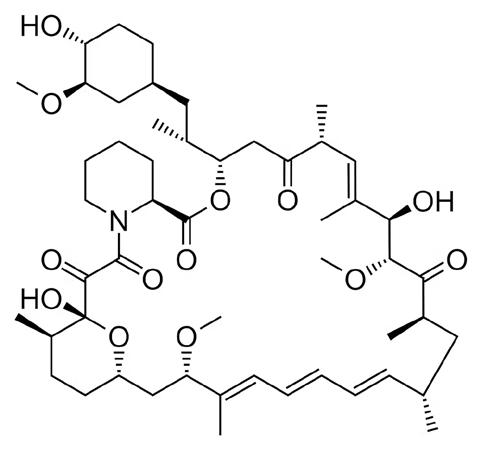
Credit: Fvasconcellos/Wikimedia Commons Chemical structure of rapamycin
At the heart of rapamycin’s power lies its ability to inhibit a protein called the target of rapamycin kinase, or TOR. This protein acts as a master regulator of cell growth and metabolism. Together with other partner proteins, TOR controls how cells respond to nutrients,
Experience.
From hammers and walls to stronger futures, we’ve always been about housing. Now, we’re making homeownership easier than ever.
Start your journey with us Visit www.tchabitat.org.
stress and environmental signals, thereby influencing major processes such as protein synthesis and immune function. Given its central role in these fundamental cellular activities, it is not surprising that cancer, metabolic disorders and age-related diseases are linked to the malfunction of TOR.
Despite being so ubiquitous in science and medicine, how rapamycin was discovered has remained largely unknown to the public. Many in the field are aware that scientists from the pharmaceutical company Ayerst Research Laboratories isolated the molecule from a soil sample containing the bacterium Streptomyces hydroscopicus in the mid-1970s. What is less well known is that this soil sample was collected as part of a Canadian-led mission to Rapa Nui in 1964, called the Medical Expedition to Easter Island, or METEI.
As a scientist who built my career around the effects of rapamycin on cells, I felt compelled to understand
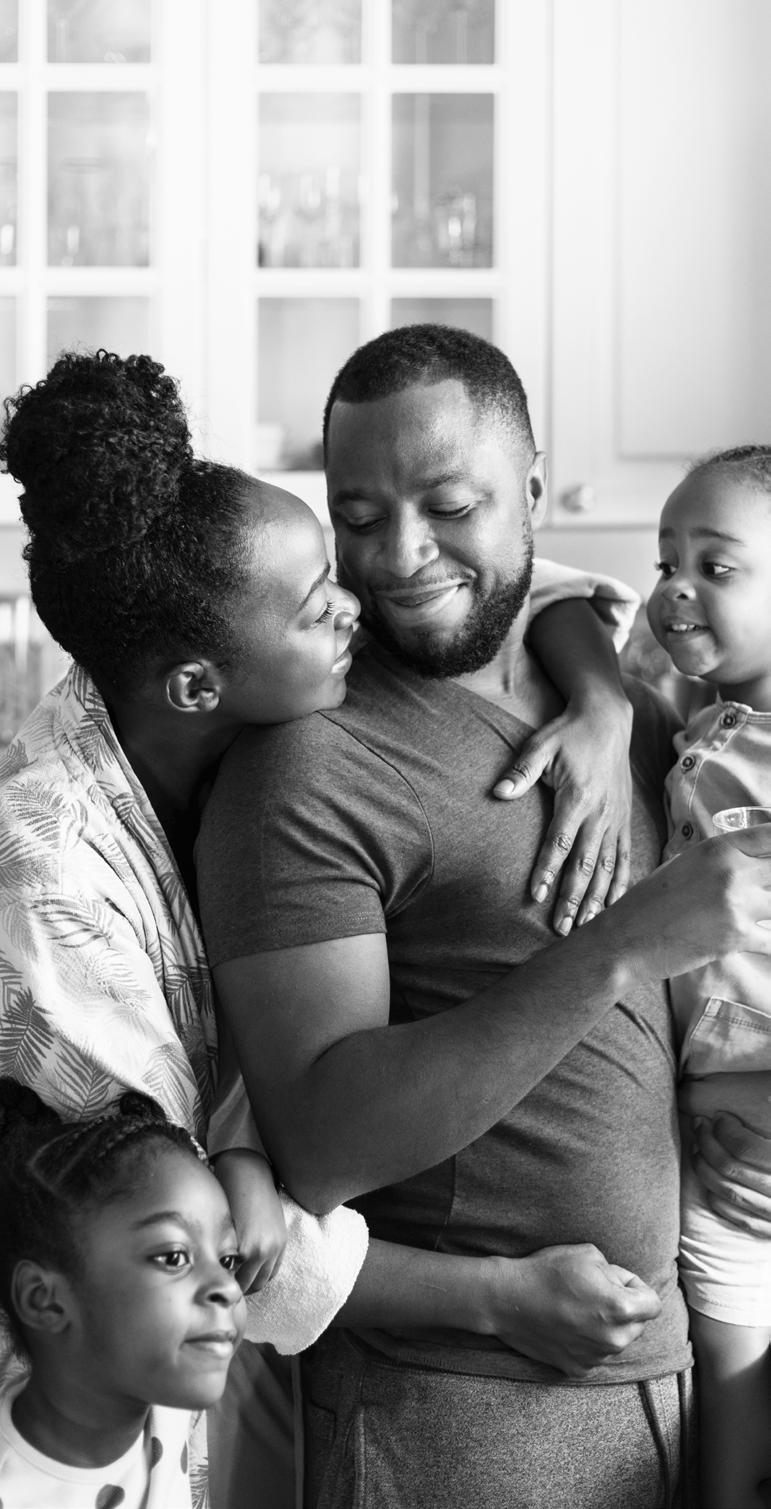
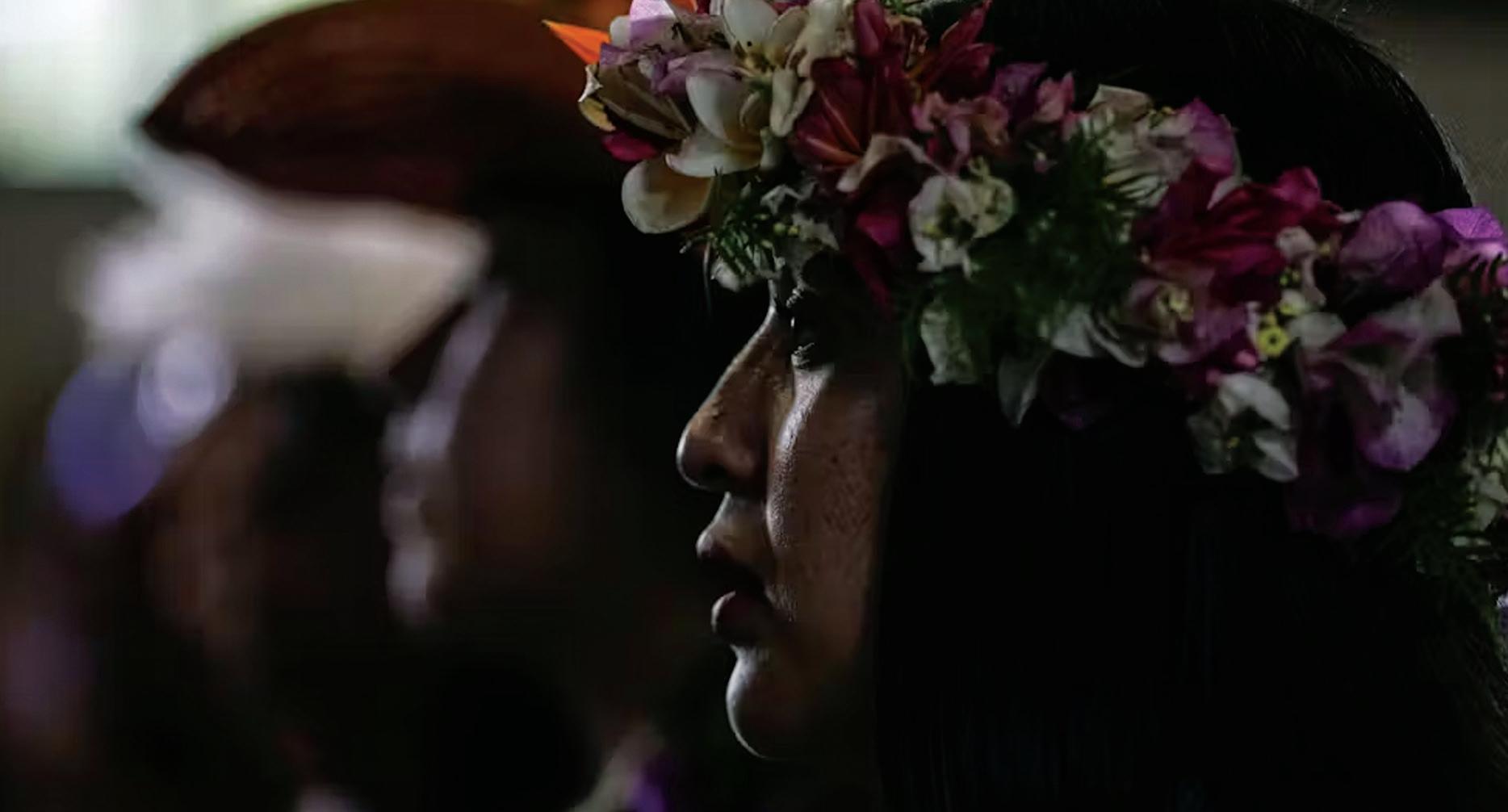
and share the human story underlying its origin. Learning about historian Jacalyn Duffin’s work on METEI completely changed how I and many of my colleagues view our own field.
Unearthing rapamycin’s complex legacy raises important questions about systemic bias in biomedical research and what pharmaceutical companies owe to the Indigenous lands from which they mine their blockbuster discoveries.
History of METEI
The Medical Expedition to Easter Island was the brainchild of a Canadian team comprised of surgeon Stanley Skoryna and bacteriologist Georges Nogrady. Their goal was to study how an isolated population adapted to environmental stress, and they believed the planned construction of an international airport on Easter Island offered a unique opportunity. They presumed that the airport would result in increased outside contact with the island’s population, resulting in changes in their health and wellness. With funding from the World Health Organization and logistical support from the Royal Canadian Navy, METEI arrived in Rapa Nui in December 1964. Over the course of three months, the team conducted medical examinations on nearly all 1,000 island inhabitants, collecting biological samples and systematically surveying the island’s flora and fauna.
It was as part of these efforts that Nogrady gathered over 200 soil samples, one of which ended up containing the rapamycin-producing Streptomyces strain of bacteria.

It’s important to realize that the expedition’s primary objective was to study the Rapa Nui people as a sort of living laboratory. They encouraged participation through bribery by offering gifts, food and supplies, and through coercion by enlisting a long-serving Franciscan priest on the island to aid in recruitment. While the researchers’ intentions may have been honorable, it is nevertheless an example of scientific colonialism, where a team of white investigators choose to study a group of predominantly nonwhite subjects without their
input, resulting in a power imbalance.
There was an inherent bias in the inception of METEI. For one, the researchers assumed the Rapa Nui had been relatively isolated from the rest of the world when there was in fact a long history of interactions with countries outside the island, beginning with reports from the early 1700s through the late 1800s.
METEI also assumed that the Rapa Nui were genetically homogeneous, ignoring the island’s complex history of migration, slavery and disease. For example, the modern population of Rapa Nui are mixed race, from both Polynesian and South American ancestors. The population also included survivors of the African slave trade who were returned to the island and brought with them diseases, including smallpox.
This miscalculation undermined one of METEI’s key research goals: to assess how genetics affect disease risk. While the team published a number of studies describing the different fauna associated with the Rapa Nui, their inability to develop a baseline is likely one reason why there was no follow-up study following the completion of the airport on Easter Island in 1967. Giving credit where it is due
By U.S. Department of Health and Human Services
The U.S. Department of Health and Human Services provided this guide on autism spectrum disorder as part of a series of briefs that offer basic information about common disabilities and tips for educators as they support children with disabilities.
Overview Autism spectrum disorder (ASD) is a developmental disorder that leads to distinctive social, communication, and behavioral strengths and challenges. A diagnosis of ASD now includes what used to be a few separate autism diagnoses:
autistic disorder, pervasive developmental disorder not otherwise specified (PDD-NOS), and Asperger syndrome. ASD is a spectrum disorder, which means that each person with autism has a unique set of strengths and challenges.
According to the Diagnostic and Statistical Manual of Mental Disorders (DSM-5), a guide created by the American Psychiatric Association for diagnosing psychological disorders, people with ASD show: Difficulty communicating and interacting with other people
Highly specific interests and repetitive behaviors
Symptoms that affect the person’s ability to function in school, at home, and in other areas of life
Symptoms for ASD generally appear by age 2 or 3, and it can be diagnosed as early as 18 months. While research shows that early intervention can lead to positive outcomes later in life, many children are diagnosed at a much later age. The first step to supporting a child showing signs of ASD is identification. Some early signs of ASD can include little to no babbling or noise-making, delayed language development, little to no response to name, or avoiding interactions like eye contact, back-and-forth exchanges, and gesturing.
Support Strategies
Educators can implement a variety of strategies to support a positive experience for children with ASD in their learning environment.
If the child already has an Individualized Family Service Plan (IFSP) or Individualized Education Program (IEP), coordinate with the intervention team.
Provide structured routines, transitions, and environments.
Display a daily schedule with pictures of routines and activities.
Use visual cue cards during transitions and routines to help the child predict next steps.
Let the child know ahead of time that a transition is coming.
Gradually increase the time the child is expected to remain on task during learning activities. Create, read, and dis-
cuss personalized “social stories” or “teaching stories” with the child to help them prepare for or cope with various situations.
Create verbal and nonverbal communication opportunities.
Create and use picture cards to cue transitions and routines.
Create and use picture cards to cue transitions and routines.
Create a communication book — with pictures of items or activities the child enjoys or may need to communicate about — that the child can use to communicate with others.
Offer wait time for the child to verbalize ideas or requests.
Read familiar, repeti-
tive books and provide opportunities for the child to fill in the blanks.
Limit the time spent with desired items and activities so that the child is motivated to request them again.
Support positive social interactions.
Use first-ten boards and cue cards to support the child while engaging in turn-taking activities. Model, prompt, and reinforce appropriate responses to common greetings and interactions.
Create and repeatedly read social stories with the child. Include pictures along with descriptions of activities, others’ feelings, and directives about how the child can respond in the situation.
What parents need to know about Tylenol, autism and the difference between finding a link and finding a cause in scientific research
By Mark Louie Ramos Assistant Research Professor of Health Policy and Administration, Penn State
Claims from the Trump White House about links between use of the painkiller acetaminophen – often sold under the brand name Tylenol in the U.S. – during pregnancy and development of autism have set off a deluge of responses across the medical, scientific and public health communities.
As a father of a child with level 2 autism – meaning autism that requires substantial support – and a statistician who works with such tools as those used in the association studies cited by the White House, I find it useful to think about the nuances of association versus causation in observational studies. I hope that this explanation is helpful to parents and expecting parents who, like me, are deeply invested in the well-being of their children.
Association is not causation, but …
Most people have heard this before, but it bears repeating: Association does not imply causation.
An often-cited example is that there is a very strong
association between ice cream sales and incidents of shark attacks. Of course, it goes without saying that shark attacks aren’t caused by ice cream sales. Rather, in the summertime, hot weather drives more appetite for ice cream and beach time. The increased number of people at the beach does, in turn, cause the likelihood of shark attacks to increase.
Yet pointing this out on its own is neither intellectually satisfying nor emotionally appeasing when it comes to real-life medical concerns, since an association does suggest potential for a causal relationship.
In other words, some associations do end up being convincingly causal. In fact, some of the most consequential discoveries of the past century in public health, like the links between smoking and lung cancer or the human papillomavirus (HPV) and cervical cancer, started out as findings of very strong association.
So when it comes to the issue of prenatal acetaminophen use and autism development, it is important to consider how strong the association found is, as well as the extent to which such an association could be considered causal.
Establishing causal association
So how do scientists determine if an observed asso-

ciation is actually causal?
The gold standard for doing so is conducting what are called randomized, controlled experiments. In these studies, participants are randomly assigned to receive treatment or not, and the environment where they are observed is controlled so that the only external element that differs among participants is whether they received treatment or not.
In doing this, researchers reasonably ensure that any difference in the outcomes of the participants can be directly attributed as being caused by whether they received the treatment. That is, any association between treatment and outcome
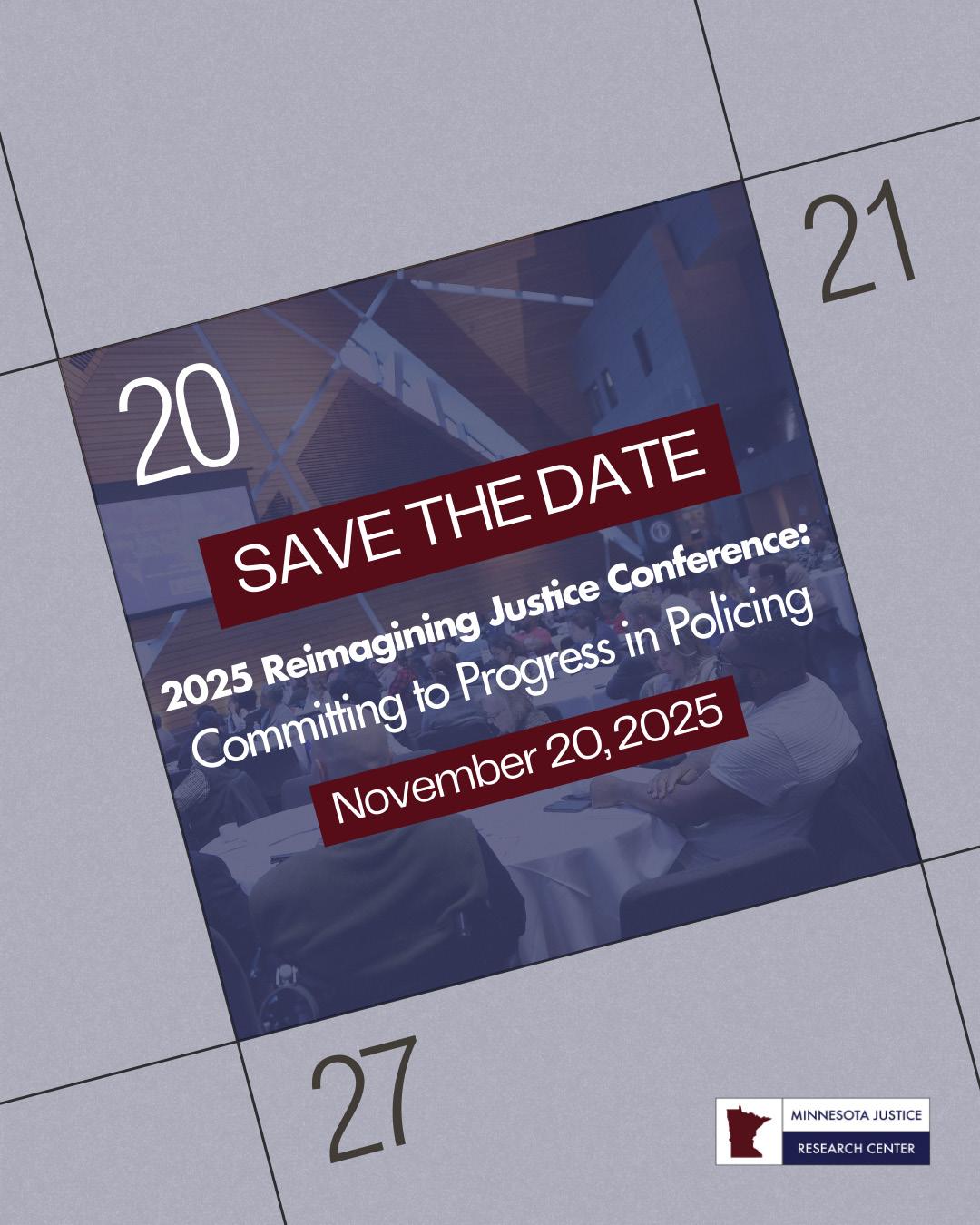
can be considered causal. Yet oftentimes, conducting such an experiment is impossible, unethical or both. For instance, it would be highly difficult to gather a cohort of pregnant women for an experiment and extremely unethical to randomly assign half of them to take acetaminophen, or any other medication for no particular reason, and the other half not to.
So when experiments are simply infeasible, an alternative is to make some reasonable assumptions on how observational data would behave if the association was causal and then see if the data aligns with these causal assumptions. This can very broadly be referred to
aminophen use and an array of neurodevelopmental disorders, including autism, identified papers with five positive associations between acetaminophen and autism.
In one of those studies, which examined 73,881 births, the researchers found that children who were exposed to acetaminophen prenatally were 20% more likely to develop borderline or clinical autism spectrum conditions. Another examined 2.48 million births and reported an estimated association of only 5%.
Both of those are weak associations. For context, estimations of increased lung cancer risk from smoking in the
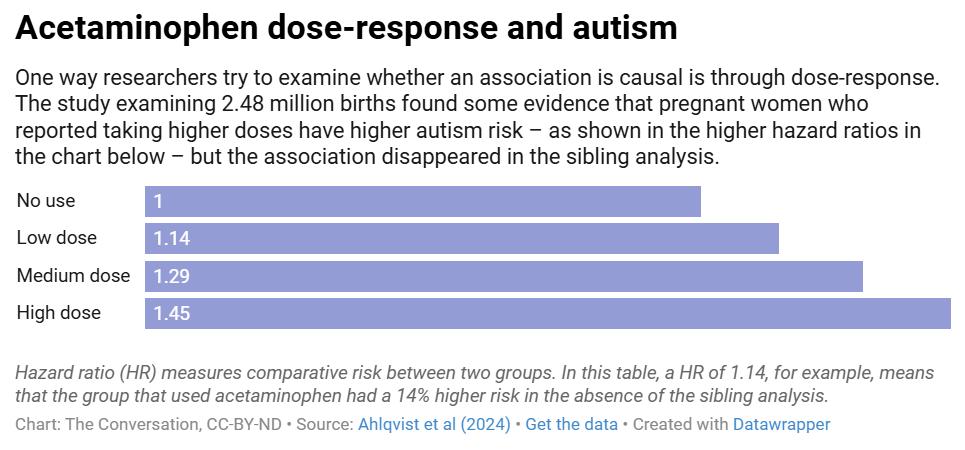
as observational causal inference.
Parsing what the studies mean So how does this apply to the current controversy over the potential for acetaminophen use during pregnancy to affect the fetus in a way that could result in a condition like autism?
Researchers who try to understand causal roles and links between one variable and potential health outcomes do so by considering: 1) the size and consistency of the association across multiple attempts to estimate it, and 2) the extent to which such association has been established under observational causal inference frameworks.
As early as 1987, researchers have been working to measure possible associations between acetaminophen use during pregnancy and autism. A number of these studies, including multiple large systematic reviews, have found evidence of such associations.
For instance, a 2025 review of 46 studies that examined association between acet-
1950s were between 900% to 1,900%. That is, a smoker is 10 to 20 times more likely than a nonsmoker to develop lung cancer. By comparison, in the two autism studies above, a pregnant woman who takes acetaminophen is 1.05 to 1.20 times more likely than one who does not take the drug to have a child who would be later diagnosed with autism.
It’s also important to keep in mind that many factors can affect how well a study is able to estimate an association. In general, larger sample sizes provide both greater power to detect an association if one does exist, as well as improved precision over estimating the value of the association. This does not mean that studies with smaller sample sizes are not valid, only that from a statistical perspective, researchers like me place greater confidence in an association drawn from a larger sample size.
Once an association
– even a small one – is established, researchers then must consider the extent to which causation can be claimed.
One way to do this is through what’s called dose-response. This means looking at whether the association is higher among women who took higher doses of acetaminophen during pregnancy.
The study mentioned above that looked at 2.48 million births shows an example of dose-response. It found that pregnant women who reported taking higher doses have higher autism risk.
Another way to examine possible causality in this context is to analyze sibling outcomes, which that same paper did. Researchers looked at whether associations between acetaminophen and autism persisted within families with more than one child.
For example, in a family with two children, if the mother used acetaminophen during one pregnancy and that child was later diagnosed with autism, but she did not use it during the other pregnancy and that child was not diagnosed, then this strengthens the causal claim. Conversely, if acetaminophen was used during the pregnancy of the child who was not diagnosed with autism and not used during the pregnancy of the child who was, then that weakens the causal claim. When this was included in the analysis, the dose-response disappeared, and in fact the overall 5% increased risk mentioned before likewise disappeared. This weakens the claim of a causal relationship. Consult your doctor At present, there is clearly not enough evidence to establish a causal association between prenatal acetaminophen use and autism. Yet as a parent who wonders if my daughter will ever be able to write her name, or hold a job or raise kids of her own, I understand that such explanations may not appease the fears or concerns of an expecting mother who is suffering from a fever.
Naturally, all of us want absolute certainty.
But that’s not possible when it comes to acetaminophen use, at least not at this time.
Your doctor will be able to provide you with much sounder advice than any existing study on this topic. Your OB-GYNs are very likely aware of these studies and have much better judgment as to how these results should be considered in the context of your personal medical history and needs. Researchers, meanwhile, will continue to dig deeper into the science of this critically important issue and, hopefully, provide greater clarity in the years to come.
Disclosure statement Mark Louie Ramos does not work for, consult, own shares in or receive funding from any company or organisation that would benefit from this article, and has disclosed no relevant affiliations beyond their academic appointment.



By Jacob L. Nelson Associate Professor of Communication, University of Utah
For weeks, there has been a great deal of reporting about an impending shake-up in the world of television news. Paramount Global CEO David Ellison is in talks to purchase The Free Press, an online media startup launched in 2021 as a conservative alternative to traditional news organizations.
Once the deal goes through, Ellison is weighing giving Free Press editor and CEO Bari Weiss the job of editor in chief at CBS News.
Should she get the job, Weiss will immediately become a “key figure in shaping the national news environment,” in the words of an article in The Guardian.
The writing Weiss has edited and produced over the years, which conveys a deep disdain for legacy news media, offers hints at what that “shaping” might look like. Among the examples: The Free Press has published essays accusing NPR of a “liberal bias” and arguing against diversity, equity and inclusion.
Weiss, who worked at The New York Times before starting The Free Press, quit her job in 2020 as an opinion editor and writer with a resignation
letter that referred to the Times as a place where “intellectual curiosity – let alone risk-taking – is now a liability.”
Though it is too soon to say what, specifically, Weiss plans to do should she take over CBS News, her record at The Free Press suggests the network’s journalism would look radically different than it does now.
But even if Weiss dramatically changes people’s experience watching CBS News, it is unlikely those changes will affect how the public feels about CBS News.
This might seem counterintuitive. After all, isn’t someone’s reaction to media dictated by their experience consuming it? A movie is good if we find it entertaining and worthwhile, and it’s bad if the opposite is true.
Waning trust in journalism
Why isn’t the same true when it comes to journalism? We tend to take for granted that people will consume news despite the fact that most Americans find the news untrustworthy and the experience of following the news mentally exhausting. So, perhaps a better question is how people’s increasing distrust of journalism affects their interactions with and perceptions of individual news outlets.
As a scholar who
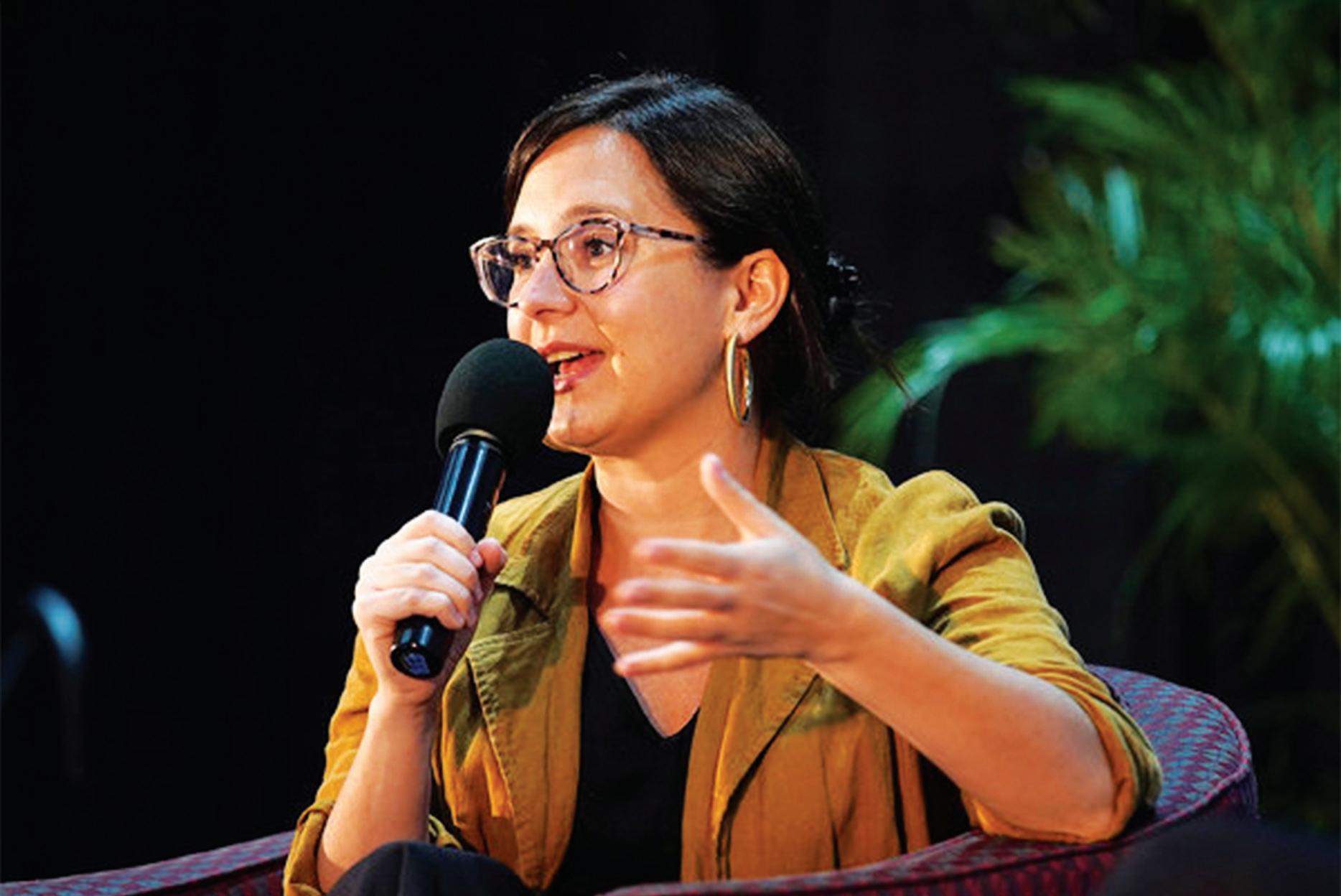
researches the relationship between journalism and the public, I have spent the past five years trying to answer these questions. Since the spring of 2020, University of Oregon professor Seth Lewis and I have interviewed hundreds of Americans about their trust in journalists and journalism.
Our research, which has been published in academic journals and will be published soon in a book by MIT Press, suggests that people’s relationship with news is defined less by their impressions of individual news stories, journalists or organizations. Instead, the pub-

lic’s views are shaped more by a broad skepticism toward the profession as a whole.
That skepticism has less to do with what the news actually looks like than it does with people’s assumption that journalism is compromised by the pursuit of profit. As one of our interviewees told us: “It’s profits over journalism and over truth.”
This sentiment suggests that for the public it may not matter much whether Weiss takes over CBS, given it will still perceive Weiss’ boss as being more motivated by money than mission.
A bipartisan distrust of news
This profit-oriented skepticism toward the news goes against the conventional wisdom that people trust news outlets that they feel align with their political ideologies and distrust those that do not.
If that conventional wisdom were true, a Weiss-led CBS might alienate a progressive subset of the public while bringing in a conservative one.
Weiss’ audience from The Free Press would follow her to one of the largest, most established brands in journalism, while those who share Weiss’ ideological leanings but are not aware of The Free Press would be pleasantly surprised to find their views suddenly represented on CBS News.
This sequence of events makes intuitive sense. Yet it is inconsistent with what we’ve learned about how people think about and interact with news.
Instead, people are likely to see CBS’ new direction less as a sign of a sincere, bottom-up ideological shift by those working at the network and more as a top-down effort by corporate elites seeking to maximize profits.
The people we interview often describe journalists generally, and television news reporters specifically, as being pushed by their organizations’ owners to politicize and sensationalize their reporting in hopes of appealing to – and monetizing the attention of – as
large an audience as possible.
“If you don’t get a certain number of views, you’re not making enough money,” one interviewee said.
Another explained that the people in charge of news channels suspect the public is too politically divided for unbiased journalism to be profitable. “Because there’s so much division now,” the interviewee said, “if a lot of journalists went toward being unbiased they will lose a lot of viewers.”
In other words, people are less likely to see the shift as a sign that those running CBS News now believe what they believe. Viewers are more likely to see it as a sign that the wealthy few who run CBS News are simply charting a new path toward monetizing the audience’s attention.
As one interviewee explained, news that the public encounters often ends up taking the form of “whatever the suits upstairs want journalism and reporting to be.”
A CBS News led by Weiss will likely be a very different network. That doesn’t mean it will find a different audience.
As Lewis and I have learned, and as Ellison and Weiss may soon find, people’s perceptions are a stubborn thing. When it comes to news media, those perceptions are less tied to the journalists themselves and more tied to assumptions about the corporations behind them.
Disclosure statement
Jacob L. Nelson does not work for, consult, own shares in or receive funding from any company or organisation that would benefit from this article, and has disclosed no relevant affiliations beyond their academic appointment.
The Guthrie Theater and North American Traditional Indigenous Food Systems (NATIFS), the nonprofit organization that owns and operates the James Beard Award-winning restaurant Owamni, last week announced that Owamni will relocate in spring 2026 to the restaurant space on the main floor of the Guthrie Theater along the Mississippi riverfront in downtown Minneapolis.
“We couldn’t be more excited to make Owamni’s stage — a restaurant that showcases Indigenous cuisine — part of the Guthrie stages,” said Sean Sherman, chef, educator, author, activist and founder of Owamni and NATIFS. “The space at the Guthrie doubles the size of our current location, and together we will continue to reconnect people with traditional Indigenous food practices and support Native cultural revitalization and community well-being. Owamni means ‘falling water’ in the Dakota language, and we’re so glad to remain close to
Indigenous From 8
Omissions in the origin stories of rapamycin reflect common ethical blind spots in how scientific discoveries are remembered.
Georges Nogrady carried soil samples back from Rapa Nui, one of which eventually reached Ayerst Research Laboratories. There, Surendra Sehgal and his team isolated what was named rapamycin, ultimately bringing it to market in the late 1990s as the im-

St. Anthony Falls, on the shores of the Mississippi, which is a source of great significance to the Dakota People.”
Guthrie Artistic Director Joseph Haj said, “We’re beyond thrilled to welcome
munosuppressant Rapamune. While Sehgal’s persistence was key in keeping the project alive through corporate upheavals –going as far as to stash a culture at home – neither Nogrady nor the METEI was ever credited in his landmark publications. Although rapamycin has generated billions of dollars in revenue, the Rapa Nui people have received no financial benefit to date. This raises questions about Indigenous rights and biopiracy, which is the commercialization of Indigenous knowledge.
Agreements like the United Nations’s 1992 Convention on Biological Diversi-
Owamni to the Guthrie in partnership with Chef Sean Sherman and NATIFS. This mission-driven, nonprofit collaboration reflects the Guthrie’s deep commitment to our community and to enhancing the vibrancy
ty and the 2007 Declaration on the Rights of Indigenous Peoples aim to protect Indigenous claims to biological resources by encouraging countries to obtain consent and input from Indigenous people and provide redress for potential harms before starting projects. However, these principles were not in place during METEI’s time. Some argue that because the bacteria that produces rapamycin has since been found in other locations, Easter Island’s soil was not uniquely essential to the drug’s discovery. Moreover, because the islanders did not use rapamycin or even know about its presence on the
of the Mississippi riverfront in downtown Minneapolis. Our current building site was chosen more than 20 years ago for its meaningful connection to the river, and this new partnership will deepen that connection as
island, some have countered that it is not a resource that can be “stolen.”
However, the discovery of rapamycin on Rapa Nui set the foundation for all subsequent research and commercialization around the molecule, and this only happened because the people were the subjects of study. Formally recognizing and educating the public about the essential role the Rapa Nui played in the eventual discovery of rapamycin is key to compensating them for their contributions.
In recent years, the broader pharmaceutical industry has begun to recognize the
we prepare to celebrate two decades in our building next year.
We look forward to welcoming visitors from near and far to experience a one-of-a-kind destination that honors the significance of this setting and brings people together in exciting new ways.”
“We are so grateful to the Minneapolis Park and Recreation Board and Water Works Pavilion for giving Owamni our solid start — we outgrew our original location almost from the moment we opened,” said Sherman. “The Guthrie space gives us the opportunity to share Indigenous cuisine with more diners, and we can’t wait to bring it to life.”
North American Traditional Indigenous Food Systems (NATIFS) is a nonprofit organization founded by Chef Sean Sherman. NATIFS is committed to addressing the economic and health crises affecting Native communities by reestablishing Native foodways. Through its educational pro-
importance of fair compensation for Indigenous contributions. Some companies have pledged to reinvest in communities where valuable natural products are sourced. However, for the Rapa Nui, pharmaceutical companies that have directly profited from rapamycin have not yet made such an acknowledgment. Ultimately, METEI is a story of both scientific triumph and social ambiguities. While the discovery of rapamycin has transformed medicine, the expedition’s impact on the Rapa Nui people is more complicated. I believe issues of biomedical consent, scientif-
grams, the Indigenous Food Lab and its award-winning restaurant Owamni, NATIFS works to restore Indigenous food knowledge and sovereignty across the continent. Visit owamni.com and natifs.org.
The Guthrie Theater (Joseph Haj, Artistic Director) is an American center for theater performance in Minneapolis, Minnesota, dedicated to producing a mix of classic and contemporary plays and cultivating the next generation of theater artists. Under Haj’s leadership, the Guthrie is guided by four core values: Artistic Excellence; Community; Diversity, Equity, Inclusion and Accessibility; and Fiscal Responsibility. Since its founding in 1963, the theater has continued to set a national standard for excellence in the field and serve the people of Minnesota as a vital cultural resource. The Guthrie houses three state-of-the-art stages, production facilities, classrooms and dramatic public spaces. Visit guthrietheater.org.
ic colonialism and overlooked contributions highlight the need for a more critical examination and awareness of the legacy of breakthrough scientific discoveries.
Disclosure statement Ted Powers does not work for, consult, own shares in or receive funding from any company or organisation that would benefit from this article, and has disclosed no relevant affiliations beyond their academic appointment.

